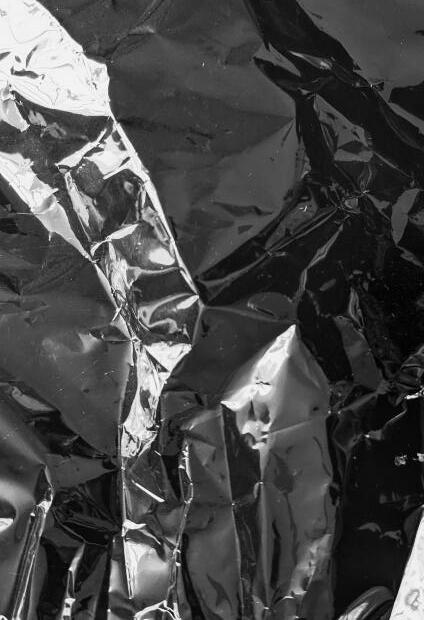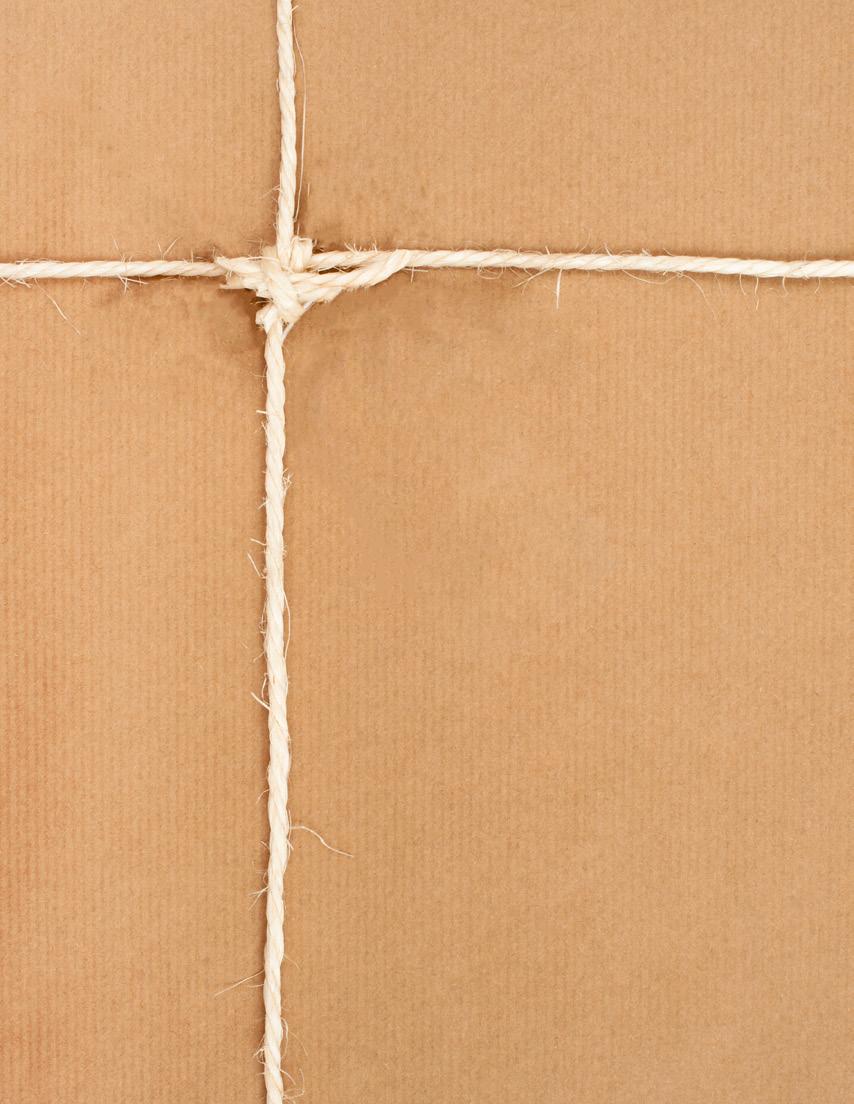







Just a week after our founding issue release party, we welcomed our fall 2022 staff and embarked on the journey of creating issue two. Once again, we were incredibly blessed to have such a talented, dedicated staff. We want to give a big thank you to our Managers, (Robin, Bella, Nishtha, and Alana) thank you for helping lead and oversee every project. We also want to give a big shoutout to our directors (Abby, Faith, Fernanda, Harris, Sarah, Aubrey, Valeria, Charlotte, Paige, Sukanya, and Anita), thank you for sharing your vision and helping your individ ual teams excel. Additionally, we want to thank the Boston University College of Communications for their continued support, donation and allowing us to rent items needed for production. Lastly, thank you to all of our models for participating and becoming our muses. This issue would not be possible or as stunning as it is without everyone’s effort.
We were trying to think of an out-of-the-box theme when the concept of Pandora’s box came to us. The story of Pandora’s box was something that resonated with our staff as we wrestled with the concept of defining evils in the world and female identity. We explored several different avenues and invite you to ponder exactly where you find evils and where you find hope.
When I moved to Boston, I didn’t know anyone, but through Strike, I have had the opportunity to meet and work with so many creative and talented minds. I feel so lucky to be involved in a community filled with amazing individuals who all seek joy and pleasure in this cre ative outlet.
To my fellow EIC and co-founder, Savannah, I’m so grateful to you for taking on this incred ible adventure with me and I have learned so much from you along the way. I can’t wait to see what your future holds, it’s so bright!!
I’m so thankful for everyone on this team, it truly couldn’t have been done without you all! I can’t wait to see what next semester has in store!
After being involved with Strike since fall of 2018 at my undergrad university, it is a bittersweet moment to be concluding my Strike career. Although I was hesitant to continue it in grad school, I am thankful that Olivia pushed me to do so and that we did this journey together. I wanted to get involved to have a creative out let again, I did not expect though to feel more connected to the city and to Boston Universi ty and I am very grateful for that. To everyone that I have worked with on this publication, I am so immensely impressed and inspired by y’all, I can’t wait to see where the future takes you and don’t ever be stranger! For the final time, Strike Out!
 Layout | Olivia Sanderford
Layout | Olivia Sanderford
 Olivia Sanderford Savannah Tindall Brand Manager Robin Kim External Manager Alana Stein Productions Manager Bella Bohnsack
Olivia Sanderford Savannah Tindall Brand Manager Robin Kim External Manager Alana Stein Productions Manager Bella Bohnsack
Director
Abby Guttman Team Members
Giana Carrozza Lydia Chou Amanda Cucciniello
Director
Valeria Ramirez Team Members
Maya Lazar Corey Peters Director Paige Yoskin Team Members
Isabella Bremer
Isabella Koeut-Futch
Kim Rodriguez Director Anita Emokpae Team Members
Mishel Chen Sherry Ma Alexis Rodriguez Ellie Watson Director Sukanya Mitra Team Members
Virginia Bonilla Annika Chaves
Isabella Koeut-Futch
Events Team Member
Kayla Petroski Finance Team Member
Claire Williams
Director
Fernanda Valdez Team Member
Kayla Petroski
Director
Harris Freeman Team Members
Jasmine Allen
Iraj Chaudhry Lucas Gruner Helen Gui Maya Lazar Gabriella Sproba Gwyneth Williams
Director Charlotte Smith Team Members
Phoebe Chen Naomi Cohen Kelly Lau Sydney Pottow Director Faith Buttrick Team Members
Ava Levinson Maggie Tyndall Director Aubrey White Team Members Jada Araki Uni Valdivieso Wooldridge
Director Sarah Reeves Team Members
Abigail Blascovich Betil Gorgu Natalie Williams
he infamous Pandora’s Box tells the story of the first woman who was put on Earth topunishmankind.Pandora,anuntimelybeautywasgivenaboxthattranspiredinto oneofGreece’sbiggestmythologicalmyths.Ashopedwelledinsidethebox,allotherevilsoftheworldcloudedoverthehorizon.

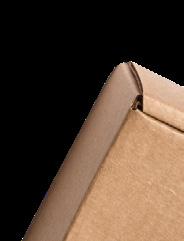


Now, what does that mean for us? As Gen-Z and as someone from the 21st century, Pandora’sBoxremindsusthatallthatglittersisnotalwaysgold.Sure,itmightdependonthe perceptionofgold,butevilexists allaroundusandwithinus.
As we strive to go out into the world with our ambitions and hopes, it is important to be mindfulofthosetinyelementsthatexistaroundus.Curiositysurroundsusatalltimes,and while it brings umpteen joy and happiness, there lies something beyond our reach. Sometimes,thingsarebestleftuntouched.
Pandora’sBoxcontinuestoco-existamongus.Themeaningbehindthemythbeing,somethingthattranspiresotherevilstotakeovertheworld.Whilecuriosityfosterscreativity,it alsobreedscontempt.
OurhopethroughthiseditionofStrikeMagazineistoletyouexploreandfindwhatcuriosity meanstoyouandatthesametime,howthatchallengesyouinyoureverydaylife.Beitgood orbad,weatStrikewantyoutoknowthatthereisspaceforallofushere.
Letthismagazinebeyourguide.



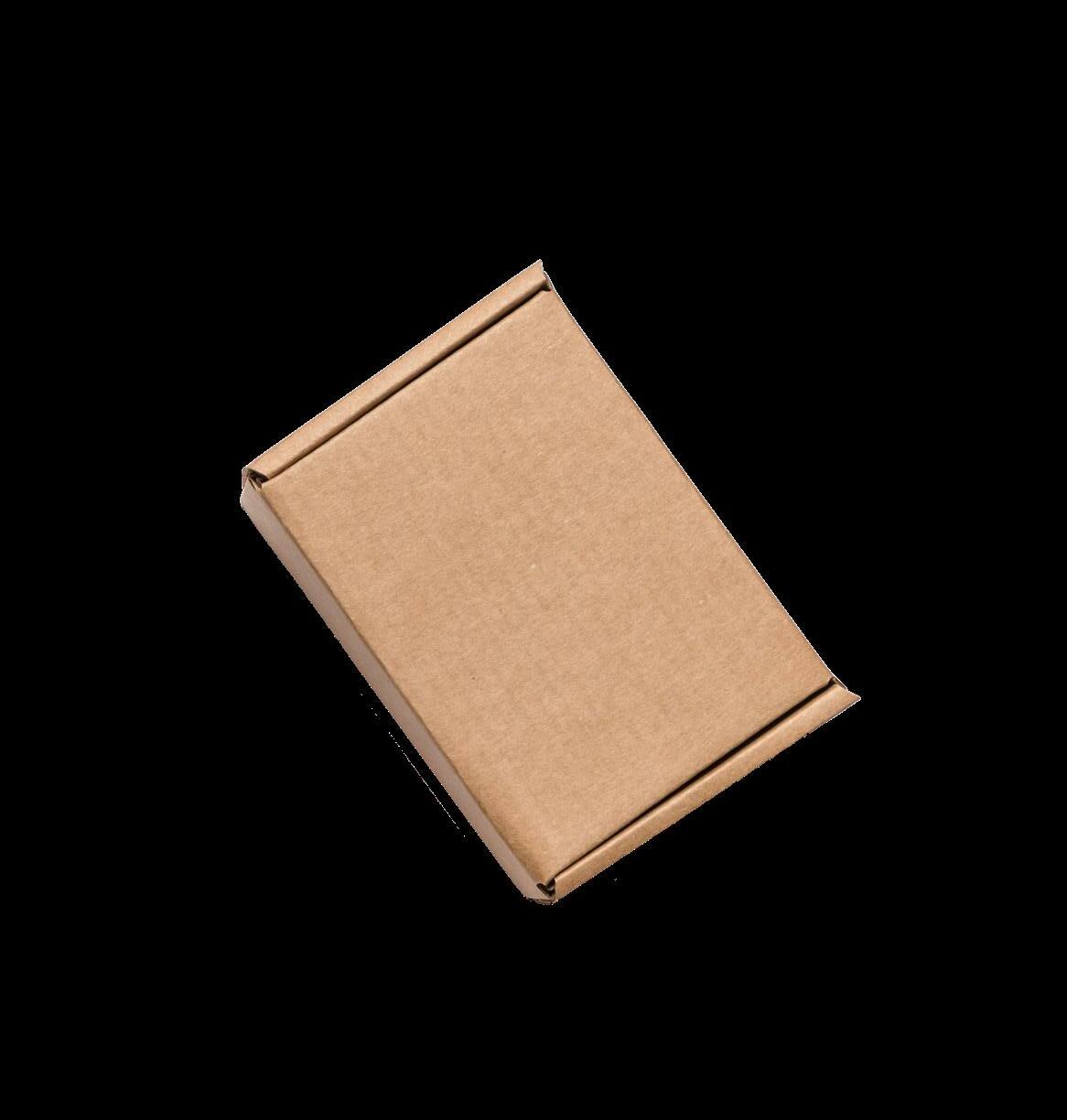
Pandora’s Box Comic Overindulgence

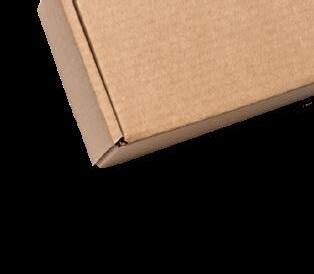

Roe v. Wade Forbidden Fruit (Hope)Fully Unhopeful Connectedness and Companionship
DALL-E: The Evolution of Artificial Intelligence Growth Hope: A devil in Disguise Life in Plastic The Power of Mistakes Strike Out
For your loyalty, I grant thee the responsibility to populate the earth.
Epimetheus created the animals and granted them each a skill and a form of protection.

Prometheus took his time molding man and was then left with no protection at all. Knowing man needed some form of defense
He asked Zeus to let them have fire, but Zeus refused.
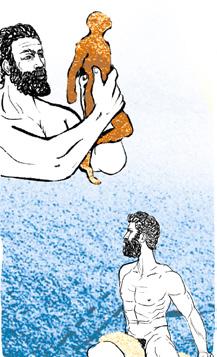
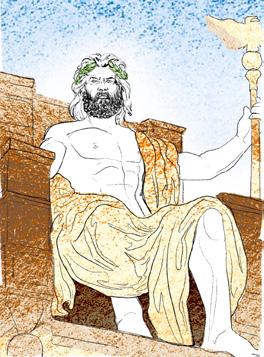

Never Prometheus, as fire is only for the gods.
I shall bestow fur, wings, swiftness, and strength as a gift upon animals.
Humans need a form of protection.
For man to be superior, they need the gift of fire.
Brothers Prometheus and Epimetheus, were titans who pledged their loyalty to the Olympians and Zeus, the god of thunder. In return, Zeus granted them the job of creating the first creatures to live on earth.Prometheus defied him, gave them fire anyways, and Zeus punished him for this.

Leaving him to endure torture every day in the Caucasus Mountains.
Brother heed thy warning, a gift from Zeus is seldom ever a gift.
Zeus presented her to Epimetheus as an offering to be his wife. As a wedding gift, Zeus bestowed her with a box warning her never to open it.



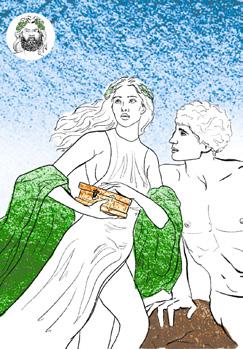


This is my special gift to you, on the sole condition it must never be opened.
Not deeming Promotheus’s punishment sufficient, he wanted to punish man for accepting fire as well. The gods then created Pandora, the first woman, ethereal as she was beautiful.







Create her in the image of Aphrodite, as cunning as Hermes, and with Hera’s wiley curiosity.




Although she tried to follow his instructions, she was naturally inquisitive and could not overcome her urge to know what the box contained.
I must know what’s inside, what treasure could be so great it should not be seen by human eyes?
Once opened, all of the world’s miseries escaped including greed, envy, hatred, pain, disease, hunger, poverty, war, and death. Managing to close the box, she left hope trapped inside, as a lesson for humanity to hold onto hope as a way to cope with the wickedness Pandora let escape.
Writer: Virginia Bonilla | Editor: Nishtha Jadav and Sukanya Mitra | Layout and Illustrations : Maya Lazar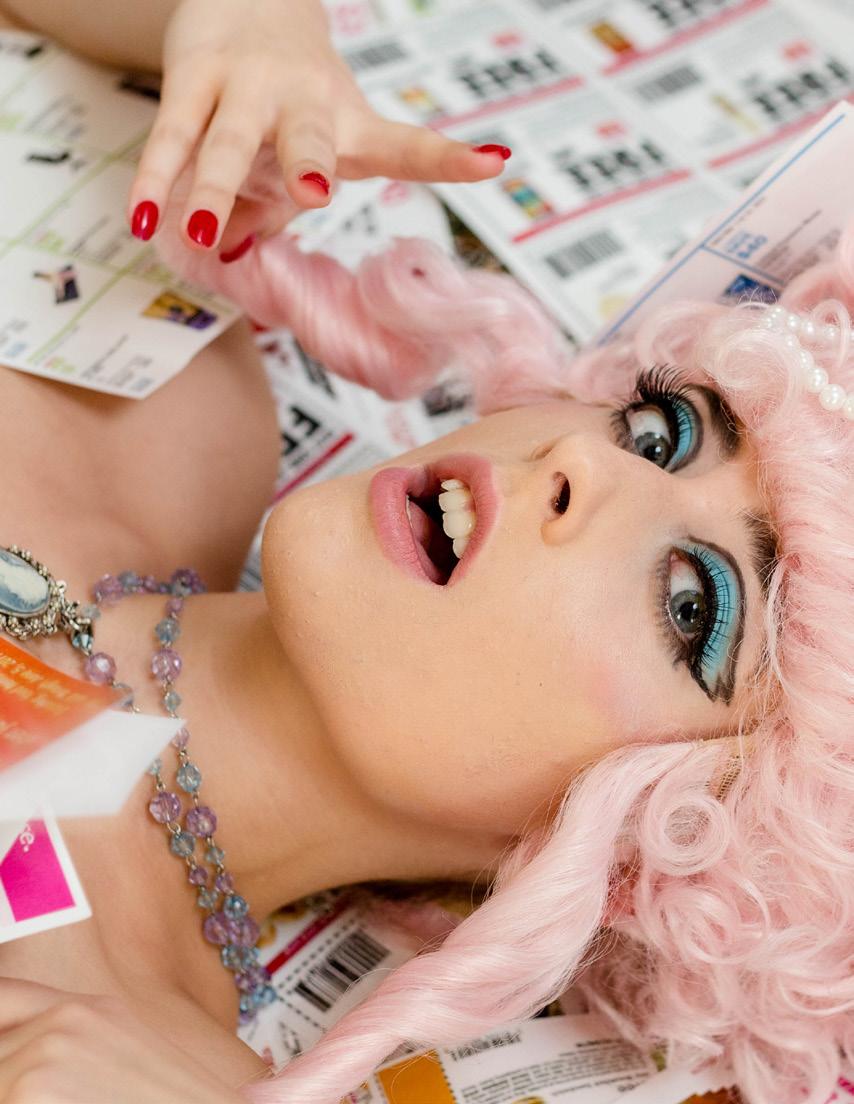





 Directors: Naomi Cohen and Kelly Lau
Photographer and Photo Editor: Lucas Gruner Beauty: Valeria Ramirez Stylists: Aubrey White and Uni Valdivieso Woolridge Layout: Olivia Sanderford Videographer: Sarah Reeves
Directors: Naomi Cohen and Kelly Lau
Photographer and Photo Editor: Lucas Gruner Beauty: Valeria Ramirez Stylists: Aubrey White and Uni Valdivieso Woolridge Layout: Olivia Sanderford Videographer: Sarah Reeves










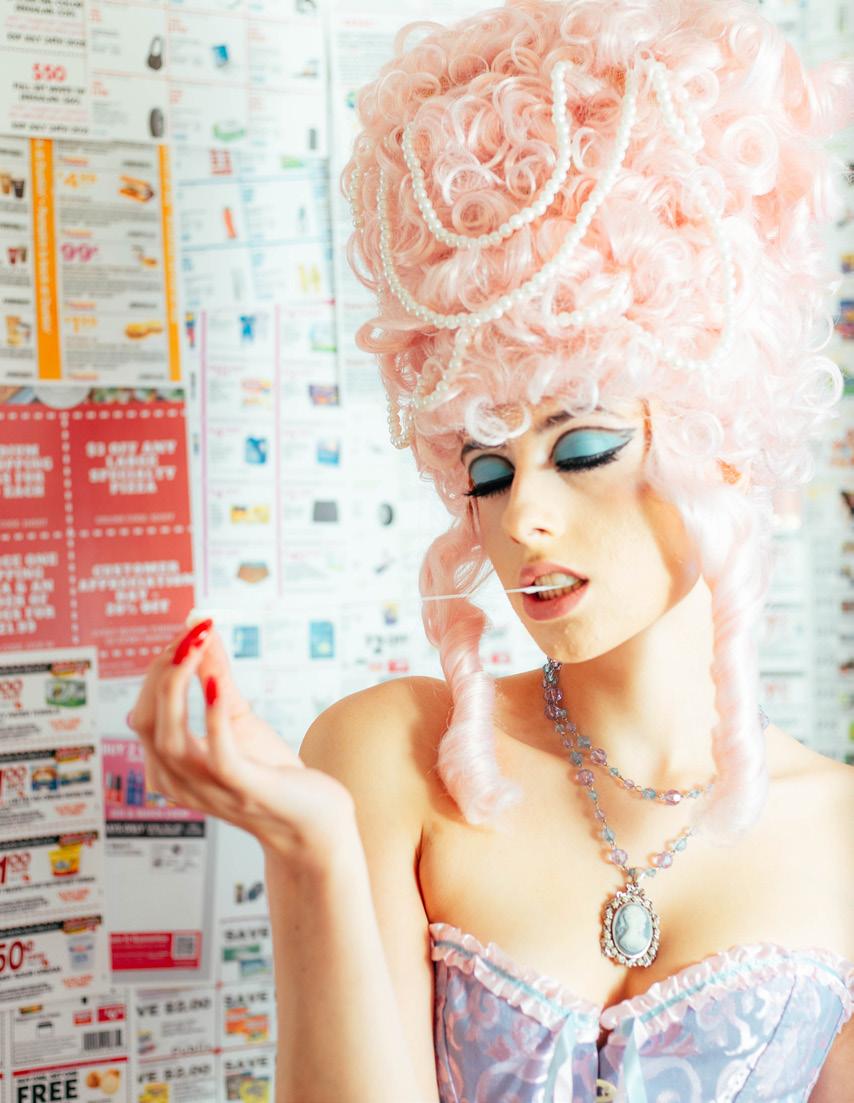
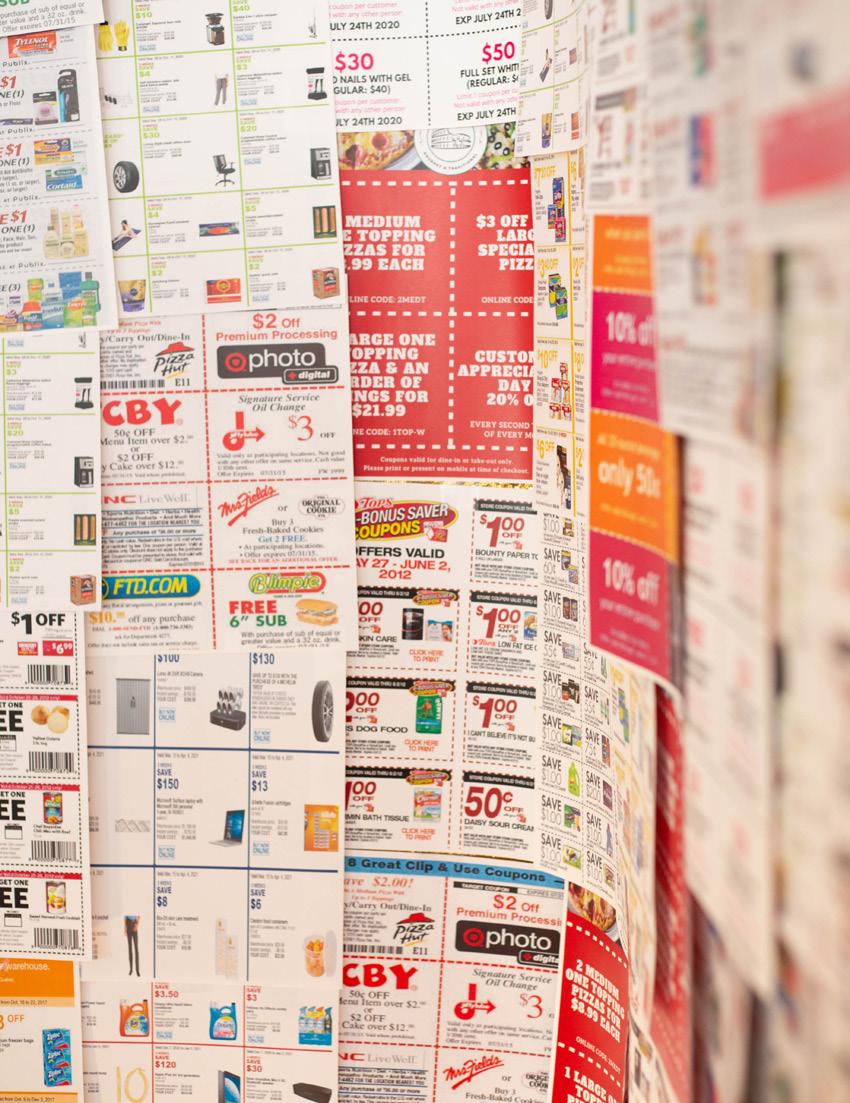
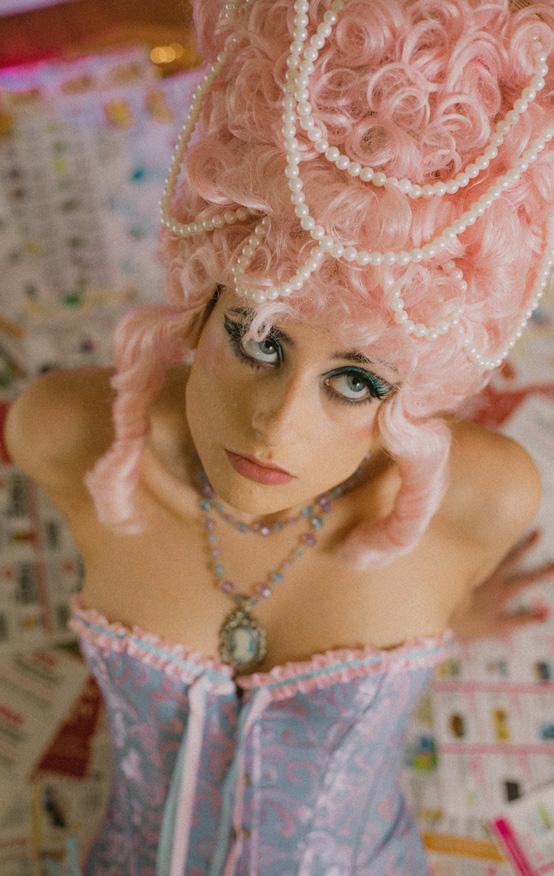
All of us are guilty of overindulgence. We all order too much, we all consume too much, and we all want too much. There’s always an option, ads and coupons promising to fulfill this desire, a way to live in luxury and pleasure. When told that the peas ants had no bread to eat, Marie Antoinette is attributed to have responded, “Then let them eat cake.” Though she almost definitely didn’t say this as the phrase predates her, the as sociation and symbolism it holds today is and inextricably linked to the French queen. gence” shoot is tion of the Marie day. A blend of old and new indulgent styles of clothing, sad terial girl. She reflects zarre the spending habits of today really ford any of the trending looks from this season? Then let them order Shein


dupes. We all have the opportunity to be Marie, princesses in corsets from Amazon and eating factory farmed McDonald’s by the pound if we please. The modern Marie is alone in a room, bored, dissatis fied, but her consola tion is found in being surounded by an abundance of stuff.
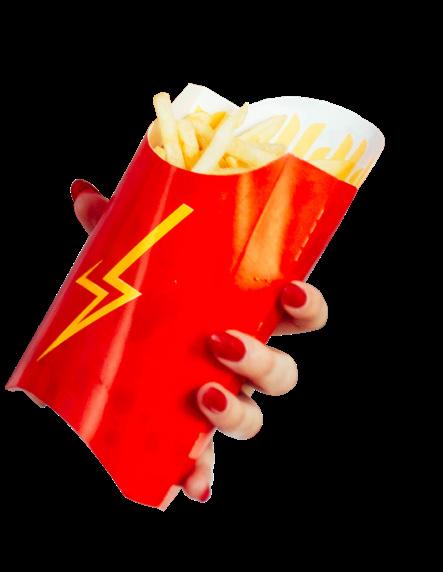
 Writer: Bella Bremer | Editor: Paige Yoskin | Layout: Olivia Sanderford
Writer: Bella Bremer | Editor: Paige Yoskin | Layout: Olivia Sanderford


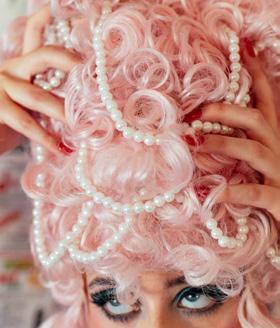
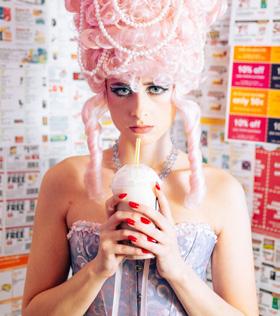




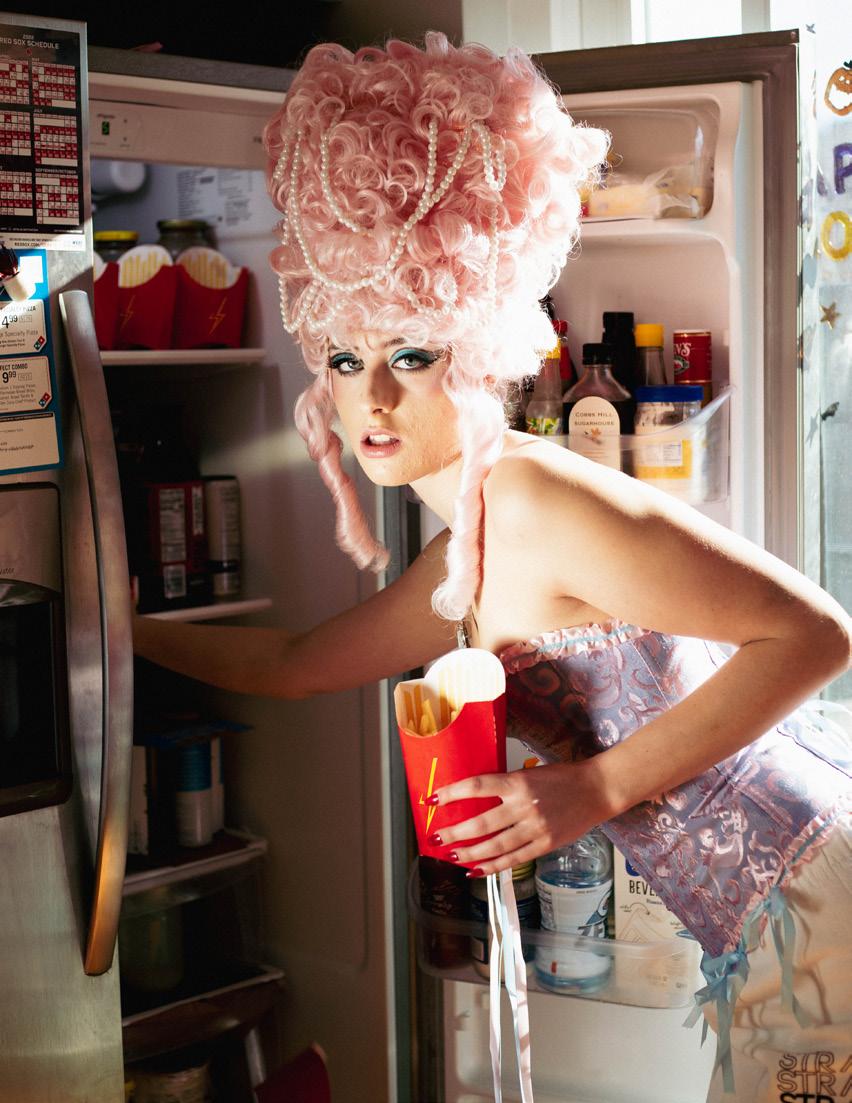
When someone thinks of the term Pan dora’s Box, the most common recol lection is of the Greek myth. Pandora’s curiosity led her to release the evils of the world [i.e sickness, war, death, etc.] into society. In her scramble to close the container, only hope re mained within. Unfortunately, the message of Pandora’s Box does not stay within mythology, and the world has dealt with enough hardships that when one says the term Pandora’s Box, they may be referring to a process or a source creating great and complicated troubles from unwise interference.
Concerningly enough, the Supreme Court of the United States has recently opened up Pan dora’s Box by overturning Roe v. Wade. The ramifications of this decision could be fatal if not taken seriously.
The United States has long thrived under the notion of individual rights, which are respec tively granted by the government. Nonetheless, the world has fought for human rights for even longer. The 1973 Supreme Court case Roe v. Wade seems to tether the line between the two. Roe v. Wade recognized and protected a wom an’s right to an abortion, the termination of a pregnancy, and was a decision that liberated womens’ rights to their bodies for decades. Roe v. Wade was a reminder that bodily autonomy is and should remain a fundamental human right to all. But, the notion of choice has long been fought by religious beliefs that human life
begins at conception and must be protected. Over the years, the act of abortion has grown to be villanized instead of understood. To carry out an abortion is to be an evil person, a murderer.
What those against abortion fail to recognize is, most of time abortion is a life-saving act, whether the individual has a condition where pregnancy could be deadly or the circum stances of their pregnancy were so horrific, having this child could kill their soul.
The overturning of Roe v. Wade triggered a wave of bans and restrictions across the states, cutting off access to important resources for women and introducing new barriers to safe, accessible care. In general, most abortions oc cur at the beginning of a pregnancy, when the embryo is essentially a sac of cells closer to an egg and sperm. Nonetheless, we cannot ignore the complications that occur further in preg nancy, such as an ectopic pregnancy, where carrying until term is a death sentence for both the mother and fetus.

If God does exist, and truly believes that all life is sacred, surely they would understand and cherish the life of the woman actually experi encing the pregnancy?
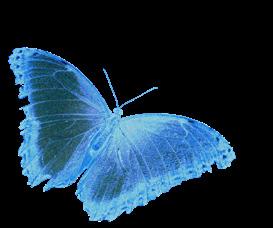
Society cannot ignore the fact that the women carrying unborn fetuses are alive and breath ing, and their lives and liberties to bodily au tonomy matter. The world cannot guarantee that every pregnancy will be safe and viable,

 Writer: Isabella Koeut-Futch | Editor: Sukanya Mitra | Layout: Olivia Sanderford
Writer: Isabella Koeut-Futch | Editor: Sukanya Mitra | Layout: Olivia Sanderford
but what they should be able to do is guaran tee access to safe abortions and medical care when problems arise.
Society should not live in extremes, as God does not either, and life is far more complicat ed than black or white – sometimes a choice must be made.
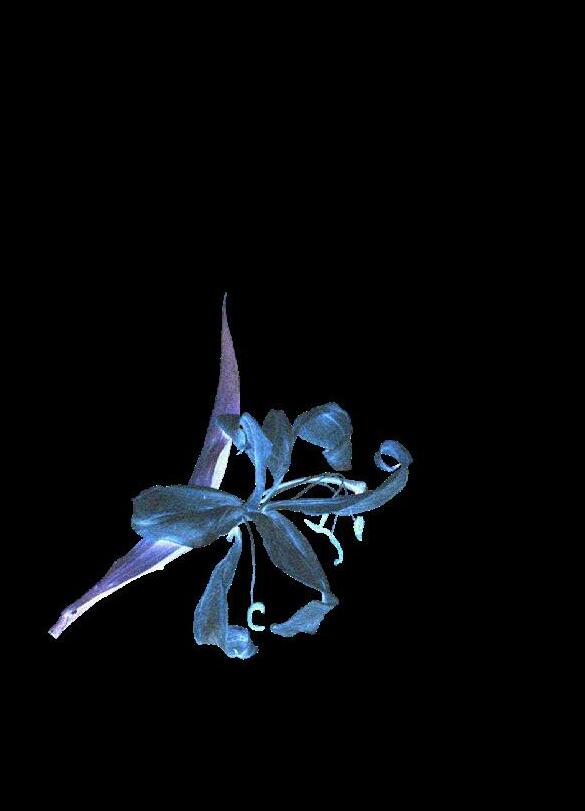


Beauty:
Photo
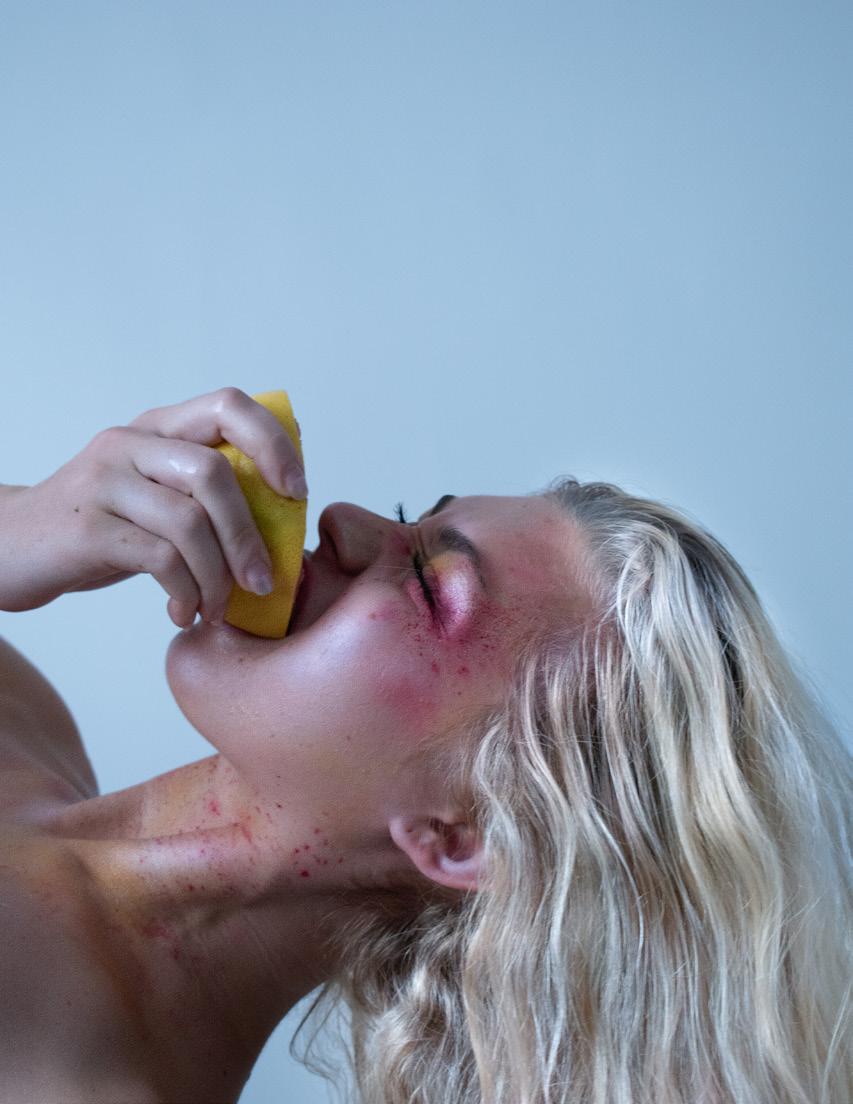
Layout:
Videographer:
On-set:
Directors: Naomi Cohen and Kelly Lau Photographers: Iraj Chaudhry, Maya Lazar and Gabriella Sproba Maya Lazar and Corey Peters Editors: Harris Freeman and Gabriella Sproba Olivia Sanderford Sarah Reeves Savannah Tindall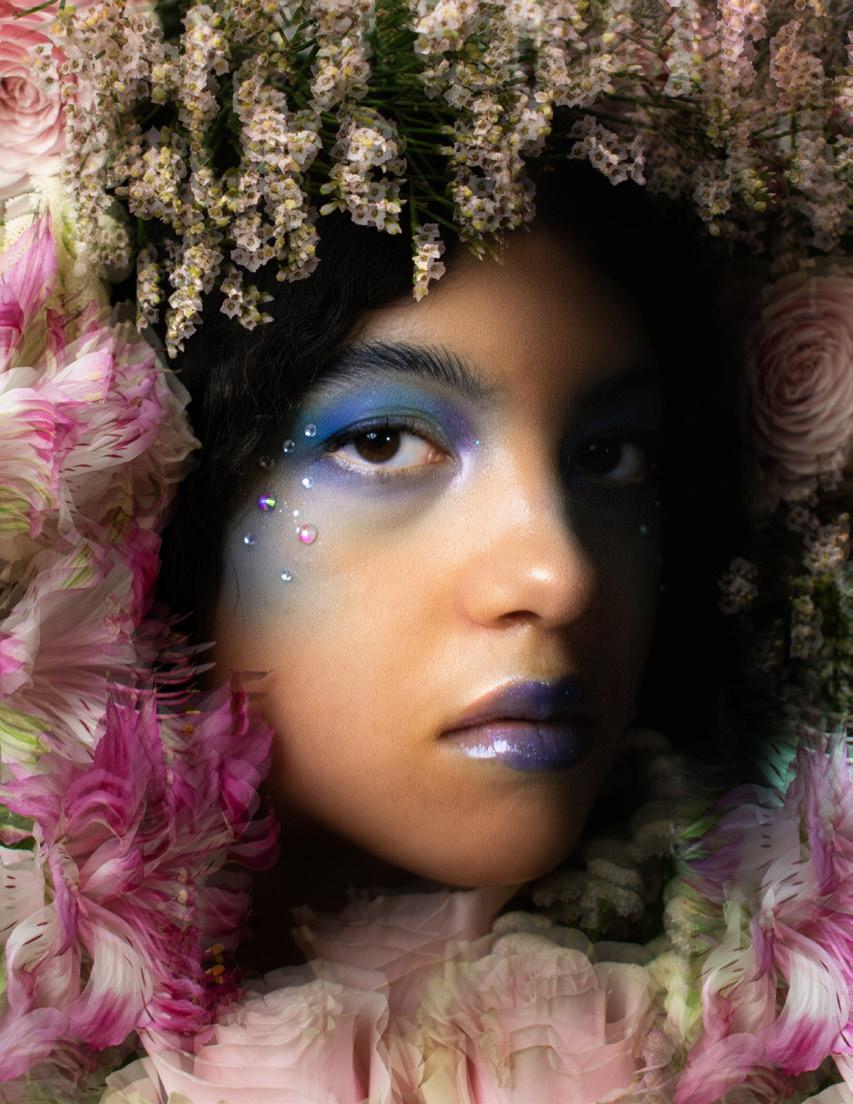









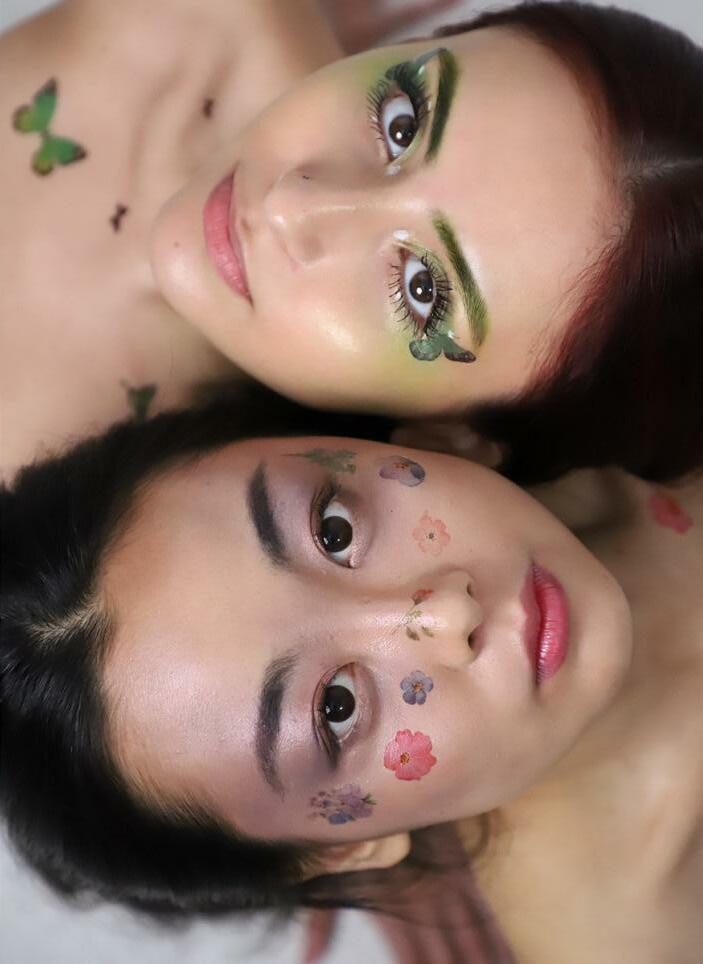
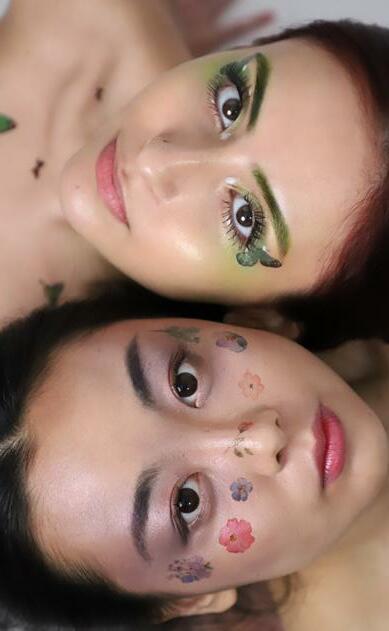
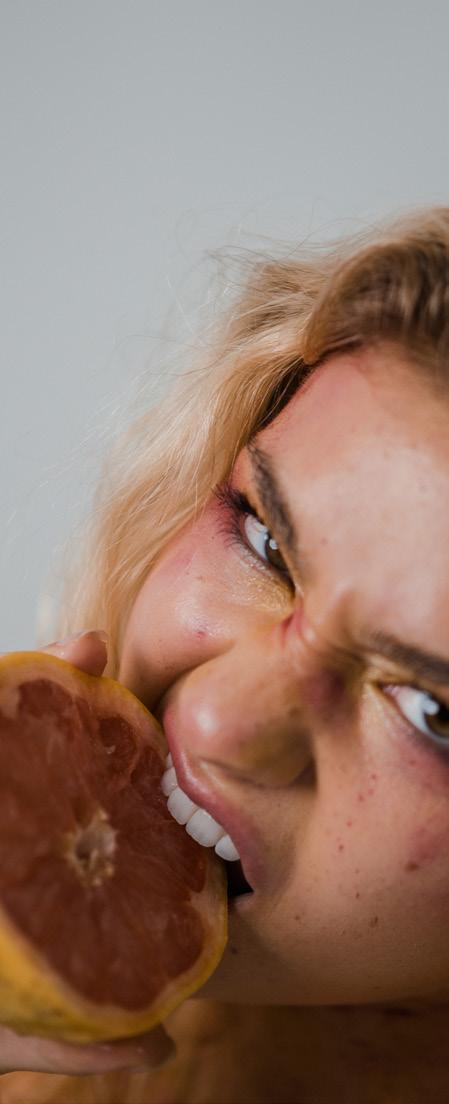 Writer: Bella Bremer | Editor: Paige Yoskin | Layout: Olivia Sanderford
Writer: Bella Bremer | Editor: Paige Yoskin | Layout: Olivia Sanderford
Whether it’s Indian and Egyption my thology around lotus flowers, ancient Greek associations of fruit tree flow ers and femininity, or more recently Georgia O’Keeffe’s paintings, the association of the natural and the feminine have held long. All these examples are also associated with sex; can femininity not escape sexual connota tions? Georgia O’Keeffe, for example, hat ed the reputation her art had; her husband pushed the vagina imagery that she never intended, and she denounce these “erotic in terpretations”. But are they even erotic? Just because the flower is feminine, it is inherently sexual? Does one imply the other? We explore the divine feminine through modern takes on classic symbolism. The flowers, butterflies, the nurturing poses, the fruits, and the make up are beyond sex - they’re a celebration of the beautiful and natural state that is wom anhood. The digital touch of the clothing and the use of bright whites play into the divine feminine. Here the forbidden fruit is not an invitation or a flirtation, but a powerful state ment of appreciation. It is the celebration of womanhood beyond how it can serve others.
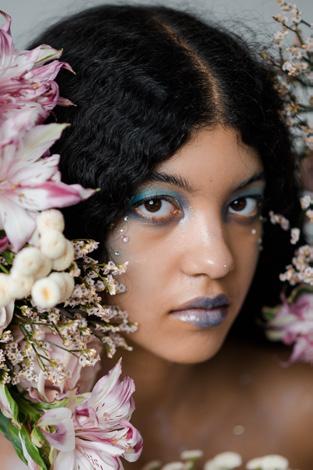

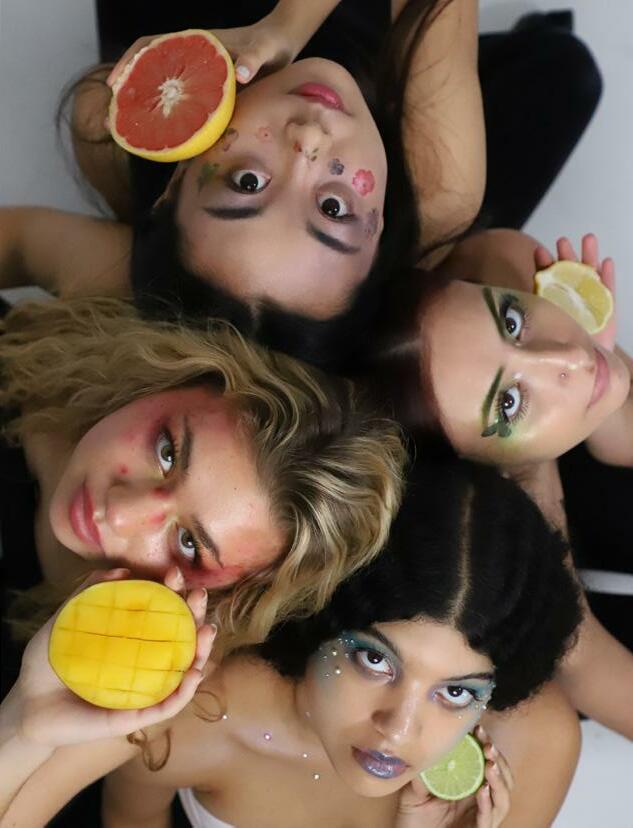

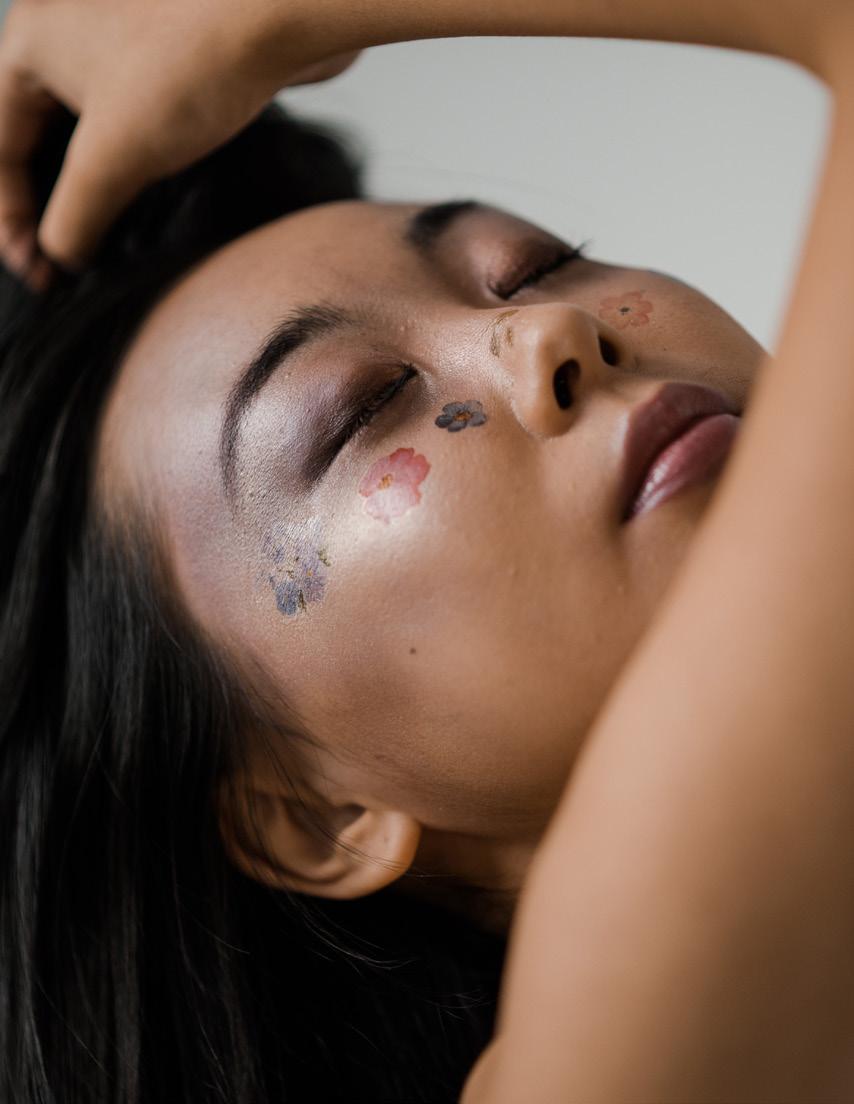
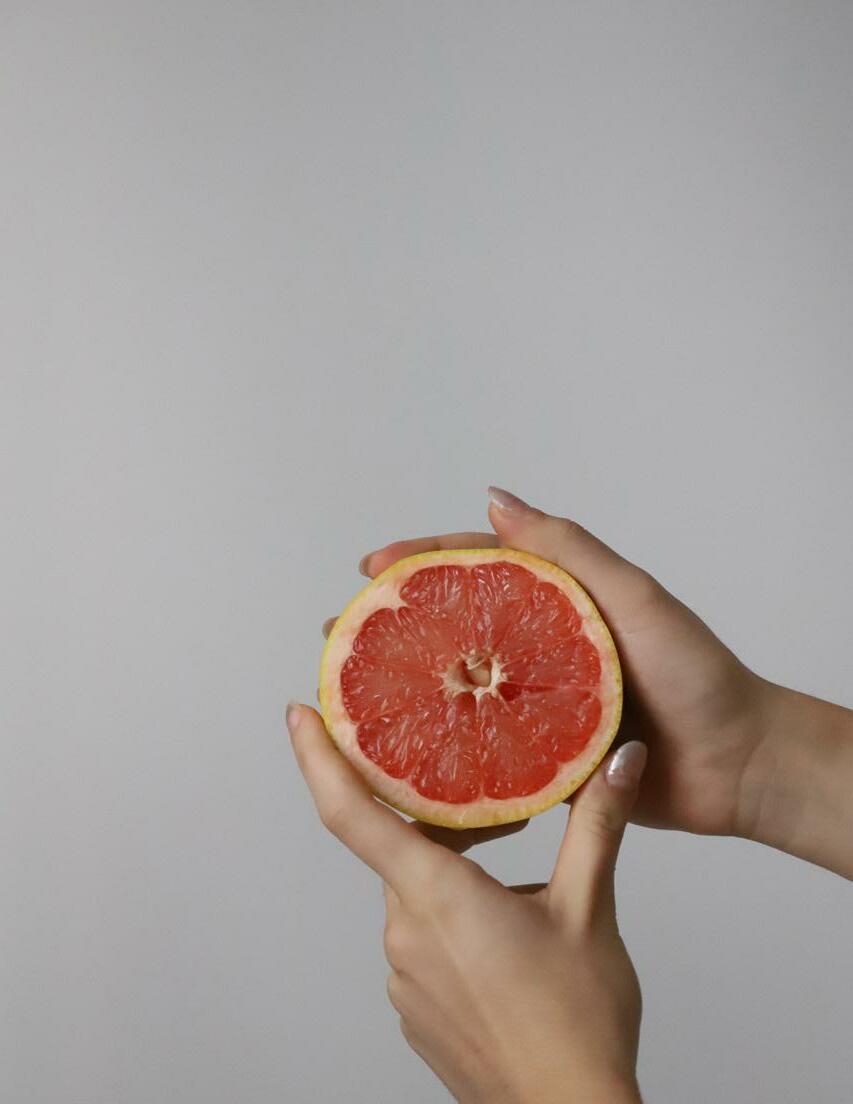


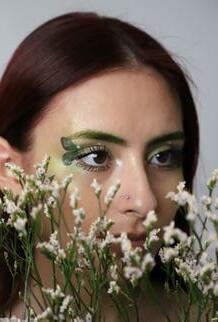

Scrolling aimlessly on my phone, I fail to recount the number of times a gray no tification has dropped down from the news app with a devastating headline.
Whether it be about climate change, another decision on women’s bodies, or any kind of dis crimination, our generation has seen some of the darkest colors of our society at the hands of easily accessible technology.
After hearing and seeing such tragedies, we’re often expected to be hopeful for a better to morrow. But hope isn’t born out of expecta tions, it comes from our own volition, authen ticity, and a choice we must make.
To me, there’s a line between being hopeful and being optimistic.
When someone tells you to be hopeful, it’s of ten interpreted as optimism with this idea of staying positive and an overall assumption that everything is going to be ok. But some times things aren’t as black and white as they appear. Life is a messy and complex process that has its ups and downs, so to have an ex pectation of extended positivity is unrealistic.
Hope should be viewed from a different lens in the sense that it’s not a mentality but some thing that’s grounded in our realities with a succinct plan for the future. Hope is an innate agency in us where despite things not going how we want them to, we choose to set a path
for ourselves at our own pace. Even though it may not assume guaranteed success, hope is a promise to ourselves that we can act to make things better in some sort of way.
At the end of the day, hope is something we are internally working toward — it’s found within.
When we are thrown in the midst of what seems to be never ending sorrow, we have an indescribable amount of feelings. We shouldn’t simply brush them off just for the sake of being positive, because this mentality at that point in time is likely untrue. We need to be honest with ourselves. We are human after all.
When our feelings have settled even if it is just for a bit, time seems to freeze with a moment of numbness from what we just en dured. We are left to look within ourselves and make a decision.
Do we remain in a moment of stillness, or do we act?
Our society has thrown every hoop imaginable to this generation.
Being hopeful can seem scary in times like these because it forces us to make a choice everytime we want to experience this active virtue. But we owe it to ourselves to choose something that will transform and simulta neously empower us to push through soci etal impositions.

When acknowledging our feelings first and then choosing hope from within, we realize that hope is an energy inside of us fueling our ability to persevere when it feels like everything else has been taken away.
It’s easy to internalize the constant negativi ty the media presents and lose sight of reality everytime discouraging headlines appear on our screens. We should feel this whirlwind of chaos and unruliness however we see fit, but when the right time comes, we’re pulled back to look inside ourselves and find the one thing that remains. The key building block toward re covery–– hope.
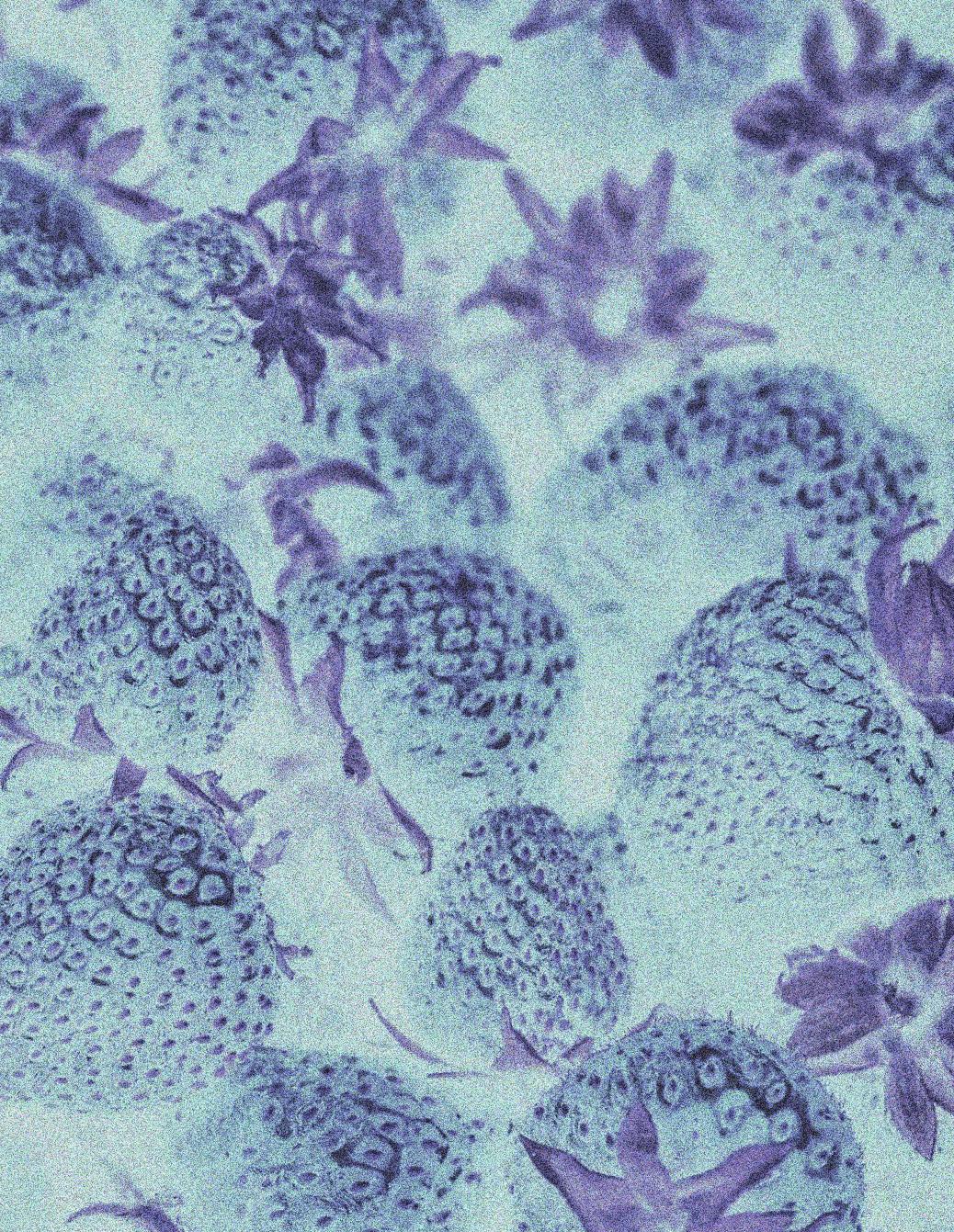
With the advances in technology of the modern age, there is little you are un able to accomplish. In a world filled with loneliness and the need for community, we created the ability to connect with peo ple anywhere. Whether through social media, or a conversation over the phone, compan ionship is only a finger tap away. While this is a huge benefit to our quality of life, nothing comes without a price. We are led to ques tion is connection at a distance truly genu ine? There is a desire to bond with people in any way we can, even if it is not to the fullest extent that we crave. But with only scraps of connection comes a dreaded feeling of sep aration. Instead of relieving isolation, limited relationships can leave you feeling incom plete. Regardless of this notion, more often than not, the commitment and love we have for our relationships perseveres over the challenges we face.
 Writer: Paige Yoskin | Editor: Sukanya Mitra | Layout: Olivia Sanderford
Writer: Paige Yoskin | Editor: Sukanya Mitra | Layout: Olivia Sanderford
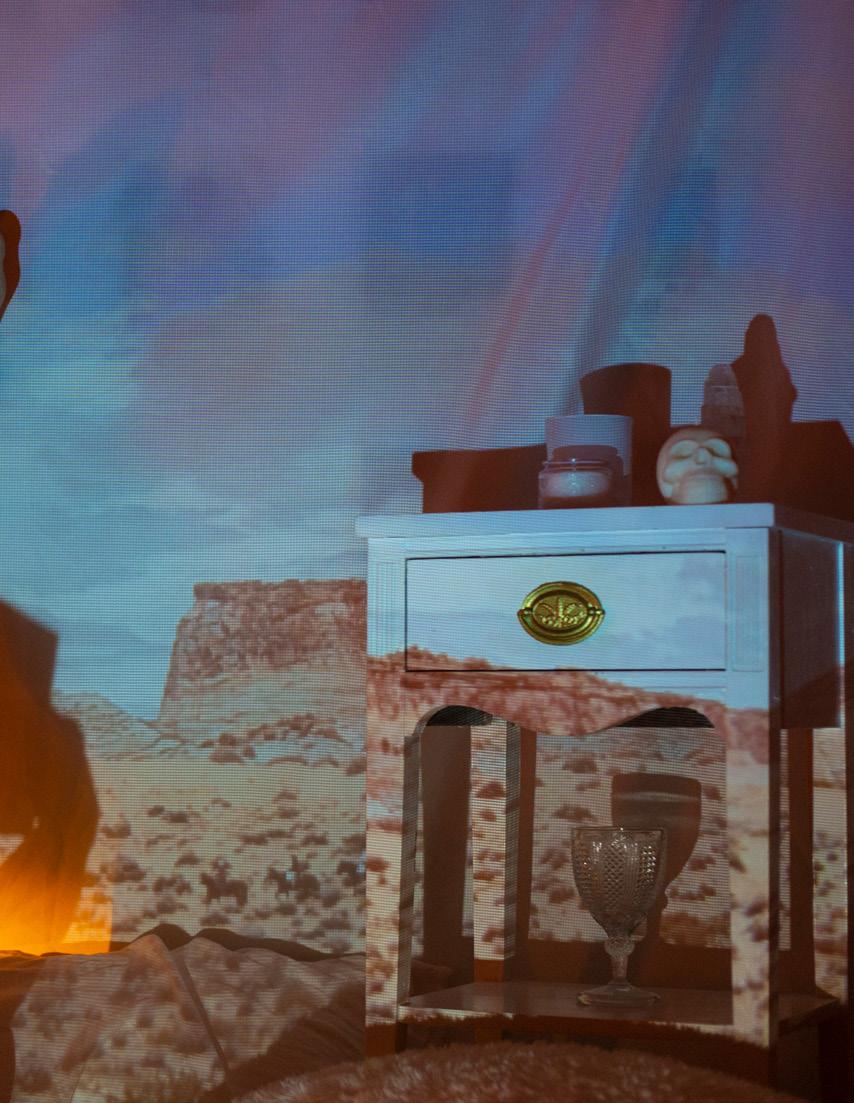
Directors:
Photographers:
Photo
On-set: Olivia Sanderford
 Bella Bohnsack and Phoebe Chen
Bella Bohnsack and Hellen Gui
Beauty: Valeria Ramirez
Stylists: Jada Araki and Aubrey White
Editors: Bella Bohnsack
Layout: Olivia Sanderford
Model: Ariel Shao
Bella Bohnsack and Phoebe Chen
Bella Bohnsack and Hellen Gui
Beauty: Valeria Ramirez
Stylists: Jada Araki and Aubrey White
Editors: Bella Bohnsack
Layout: Olivia Sanderford
Model: Ariel Shao
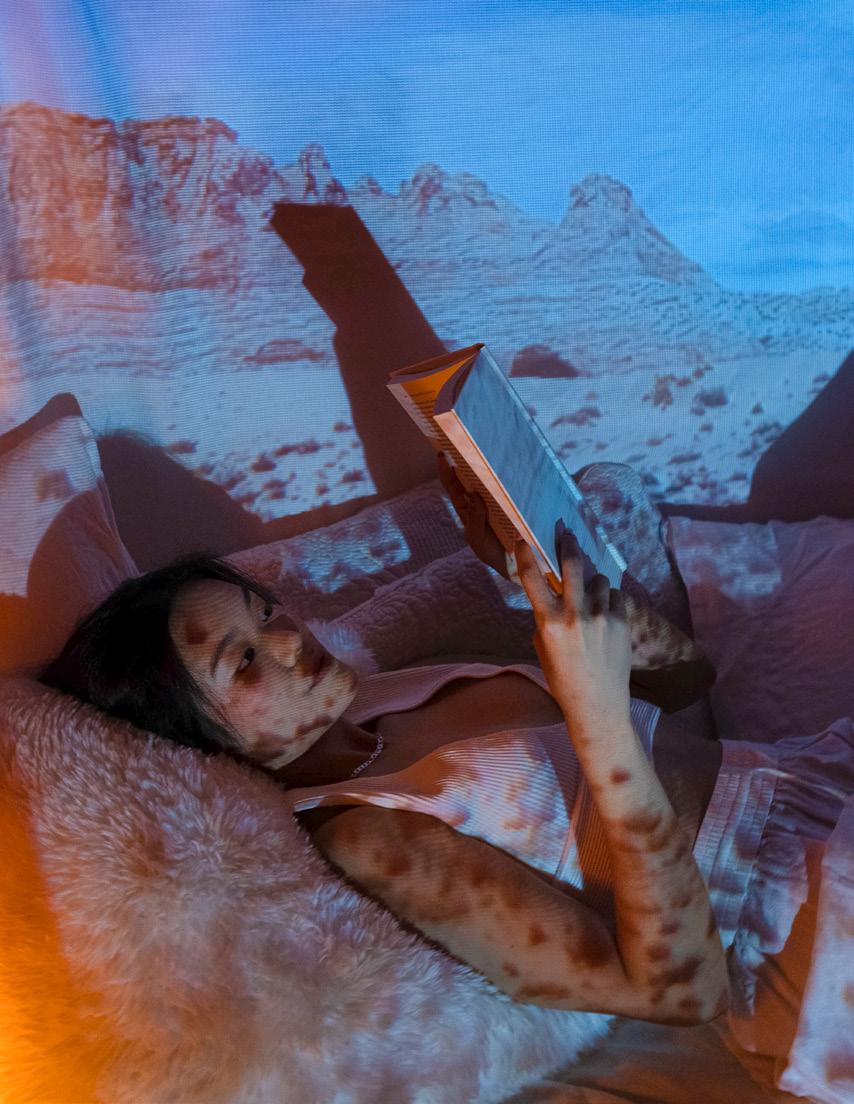




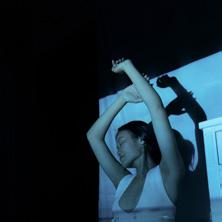

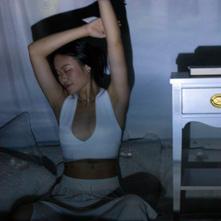
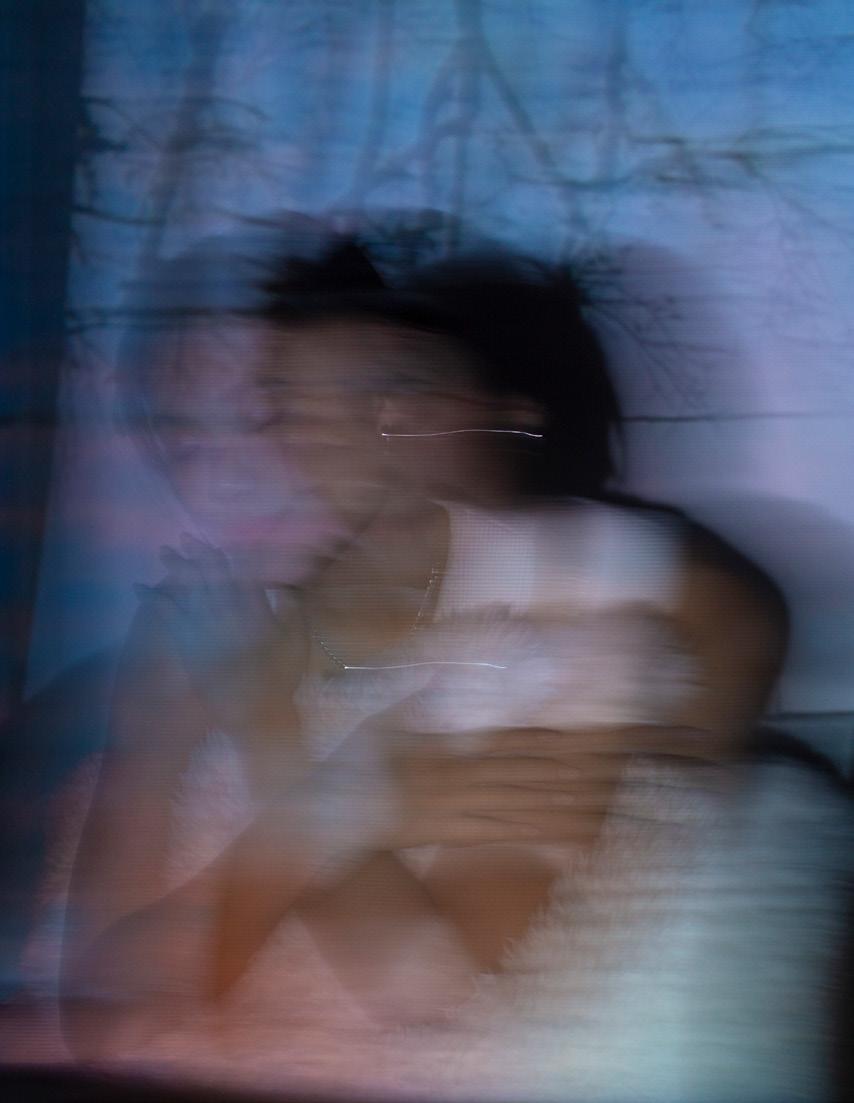

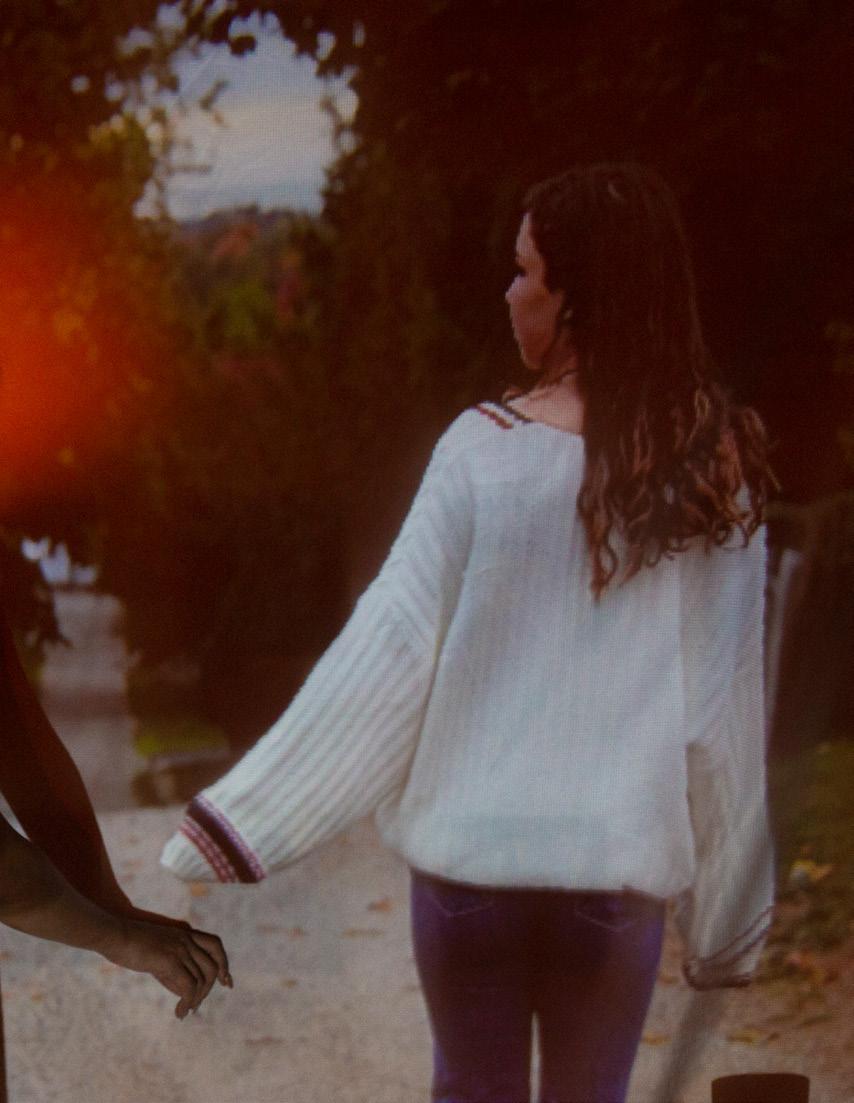

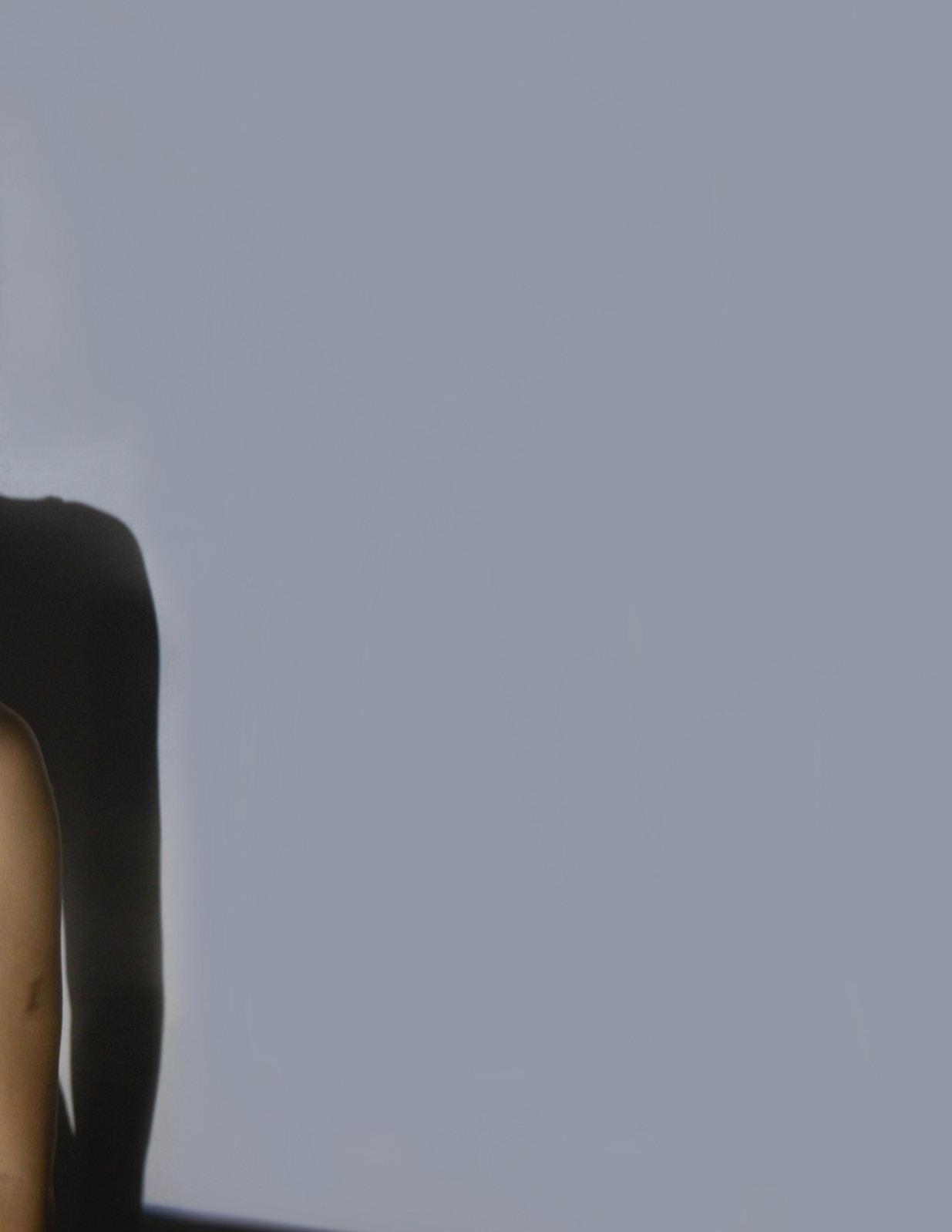


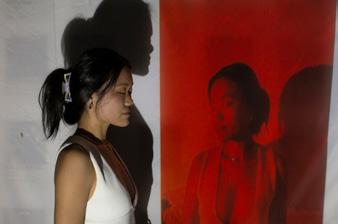





We already know that Curiosity is the moth er of invention. As human beings, we often find ourselves engaged in the realms of our minds. DALL-E is one such program that gets your thoughts into the physical realm using Artificial Intelligence to create your thoughts into pictures. Anything you think about can be put into a picture.
While the concept might sound intriguing and genius, something more lies beneath the surface. Human thoughts are interest ing, but sometimes evil and vile.
As thinking beings and mindful individuals, it feels almost obligatory to create constantly. As concepts such as DALL-E come into exis tence, it is important to understand the ben efits and repercussions of technology. The pros of having software turn your words into images are excellent, but what if the same image was used to cause destruction and spread violence?

You can use an image to create a beauti ful landscape and at the same time create havoc by tweeting a hate speech or draw

ing something controversial on many levels. Whatever you decide to do, it is important to note that just like Pandora’s box, there are layers to how one should use Artificial Intelli gence to curate and innovate.

DALL-E and DALL-E 2 are machine-run mod els that are developed by OpenAI to gener ate digital images from language, as stated by the software’s website. While the model aims to benefit humanity and aid mankind, there do lie certain repercussions that go along with it. In my personal opinion, tech nology creates distance from human life. Even though machines are designed to make our lives easier, they do push us away from human sentiment.
Receiving a text message is not the same as those good old handwritten letter days, but they do the job anyway and much faster. You see, the whole world is so bonded with tech nology that without it, we feel disconnected. But with it, we lack depth in our conversations. Think about that time when you tried reading a book but suddenly found yourself spending hours scrolling through Instagram.
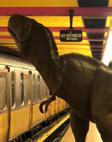

Guilty as charged, we have all been there.
But this is not something in our control Tech nology is everywhere and an integral part of our lives. What DALL-E aims to do is expand on this very concept of what technology can do for us. Images through words are like thoughts becoming things.

Real enough for us to see and use at our dis posal. While this is a creative outlet for soci ety to channel their potential and put in their words to images, this is an expression of how all that we think, sometimes, can harm us in multiple ways.
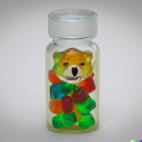

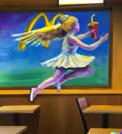

DALL- E endeavors to tell us that while its AI features can turn words into images, we might want to reconsider what images we want to create out of it. Steering clear from anything that provokes hate and violence is a good idea. Curating something that changes lives is helpful. Drawing something that holds importance to you is the best op tion. I mean, why wouldn’t you want to cre ate an image of your dog and your cat chill ing together?
Of course, like every other technology, we must use it to enhance our human interac tions rather than avoid any. It is futile to fight technology but imperative to keep alive the feeling of staying connected to our loved ones.
As software such as DALL-E comes into exis tence, human mindfulness is made to chal lenge itself in multiple ways.
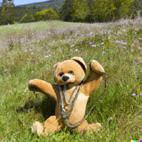
On-set:
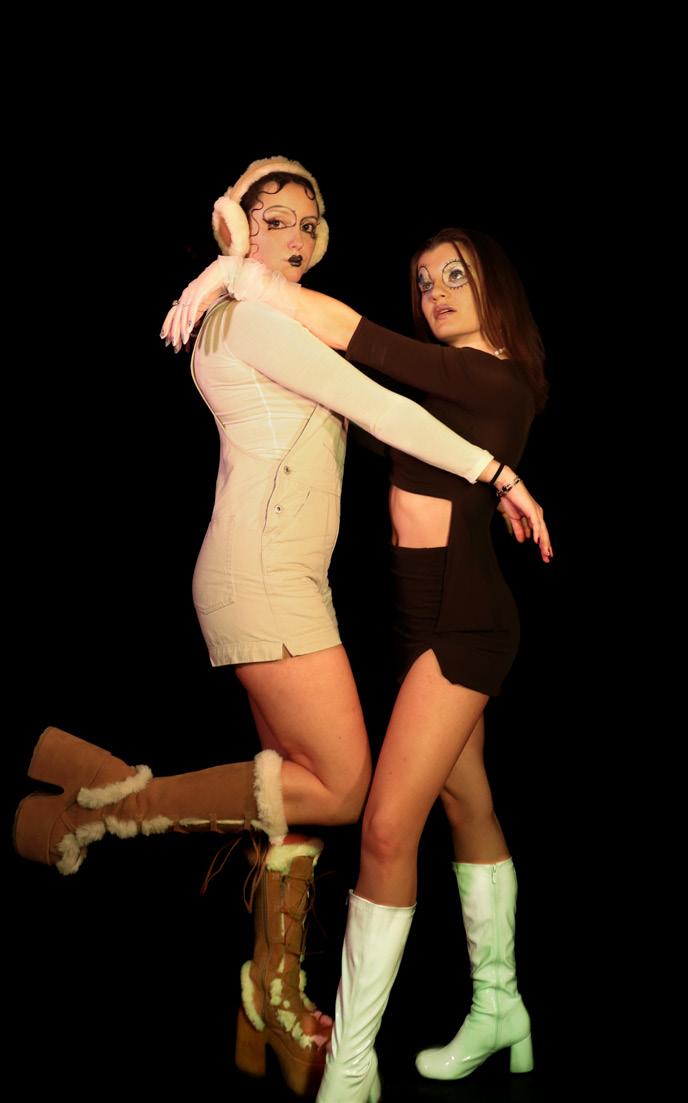
t is human nature to define ourselves on the basis of how others perceive us. We put up a front to be the person that meets expec tations. It is in the abandonment of this facade that we truly find who we are, and who we can become. Growth is determining our true iden tity, and expanding upon it as we learn more about ourselves. While it is necessary to let certain aspects of ourselves go as we change, our past experiences and traits remain in ev ery evolution of our personality. Elements of playfulness and nostalgia, with added edge, convey the influence that our past has in our continued development. Colorful makeup and editing express a feeling of individuality and confidence that comes from finally determin ing who you are.

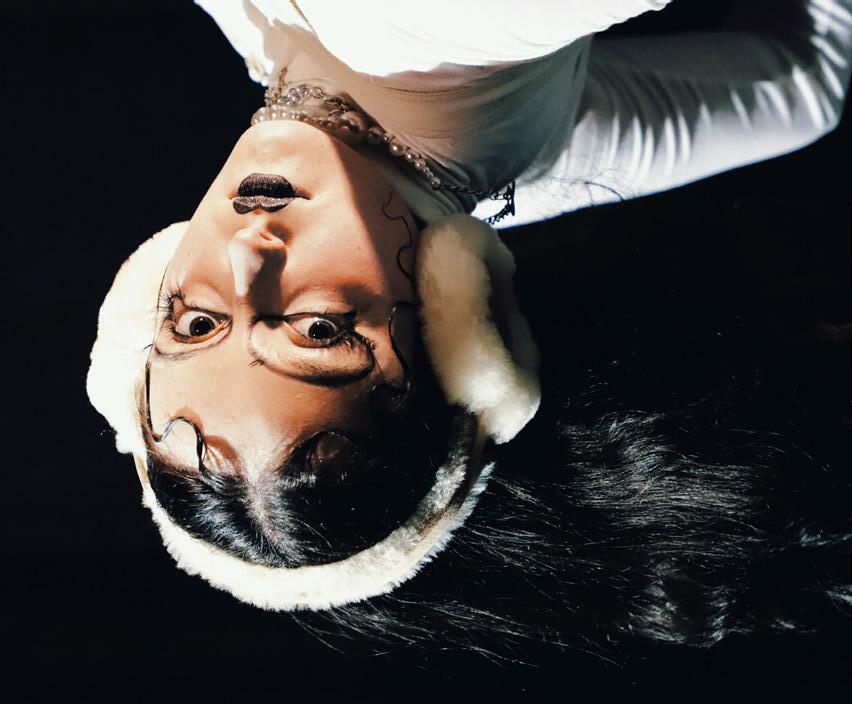
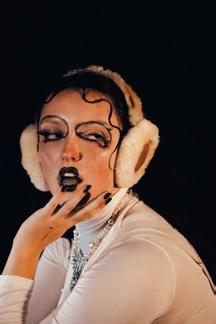


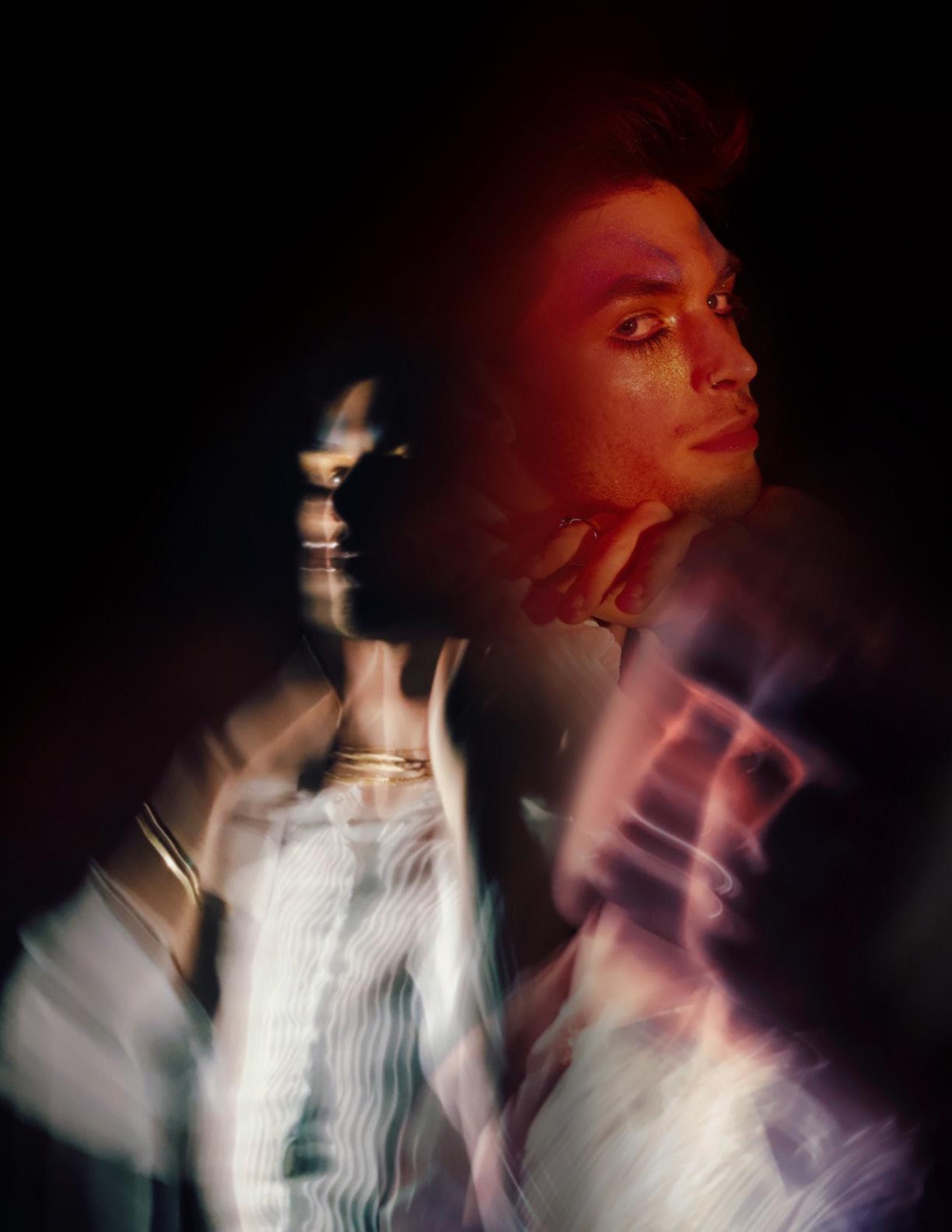
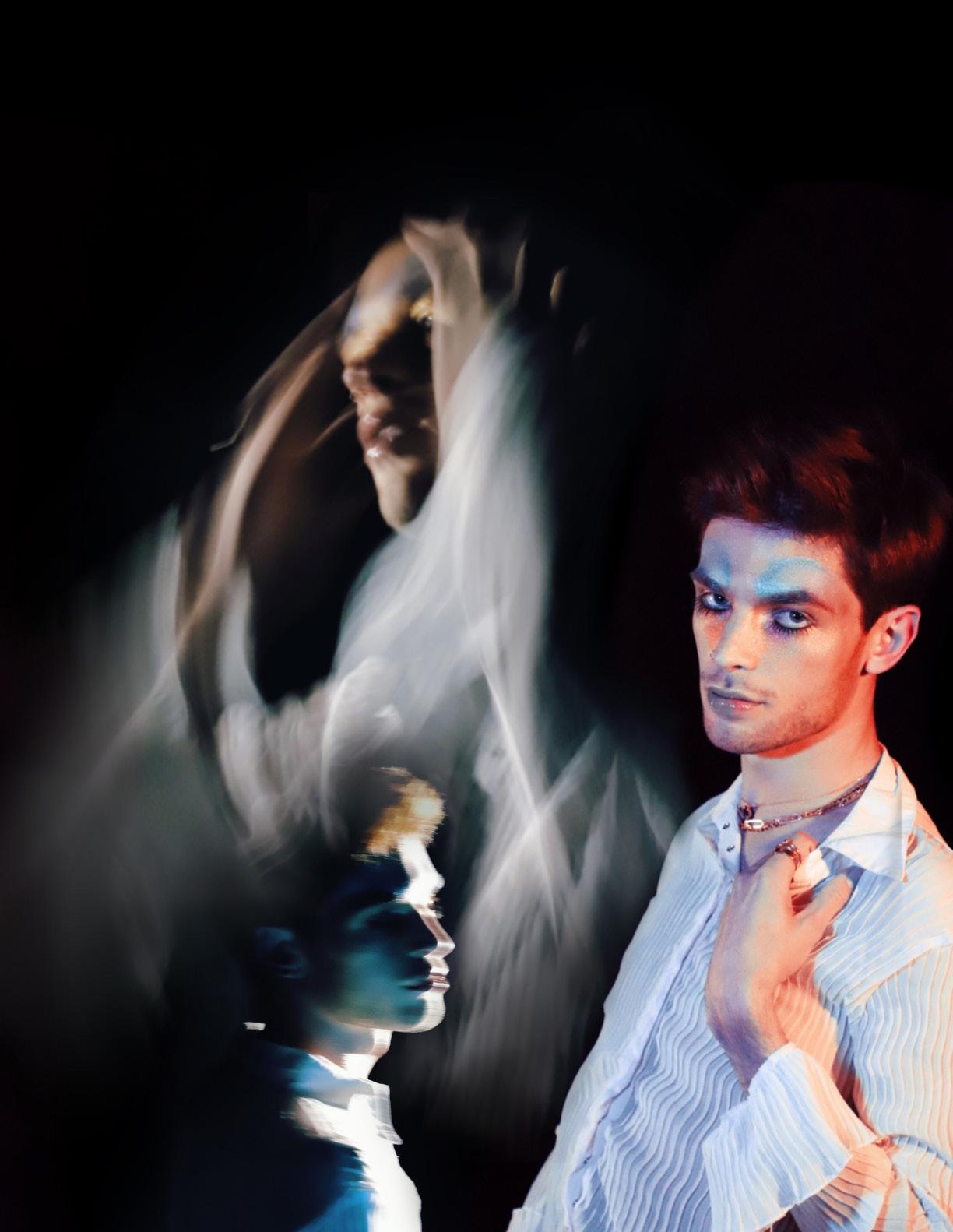
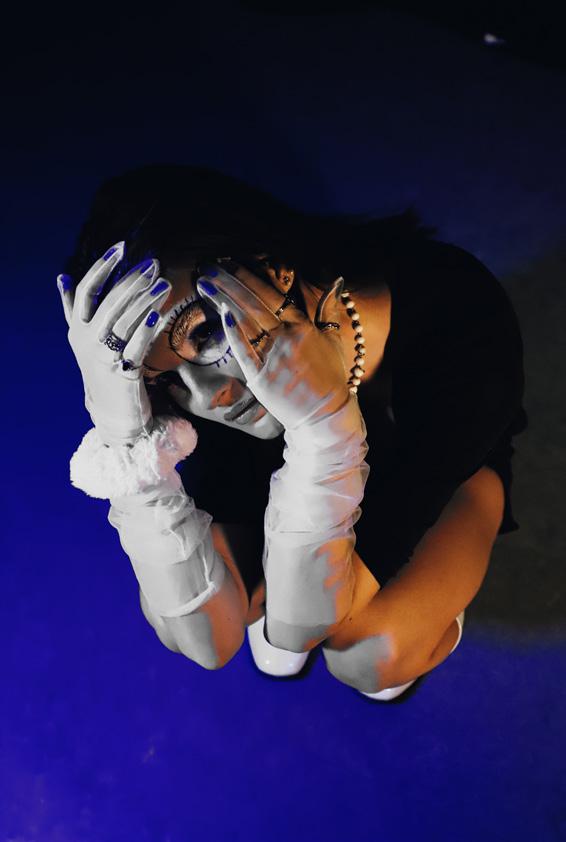

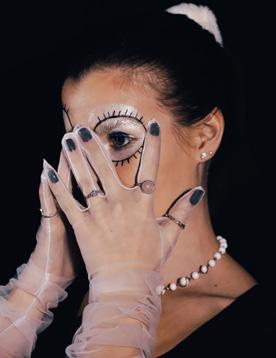


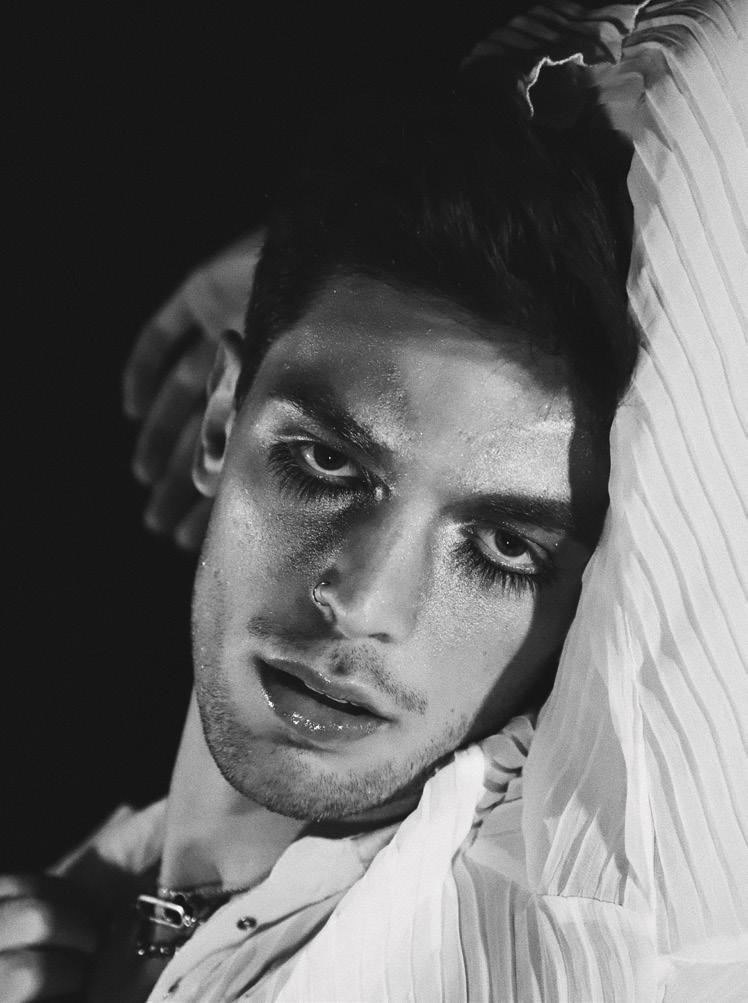
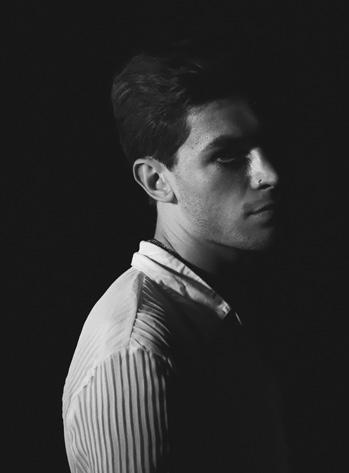
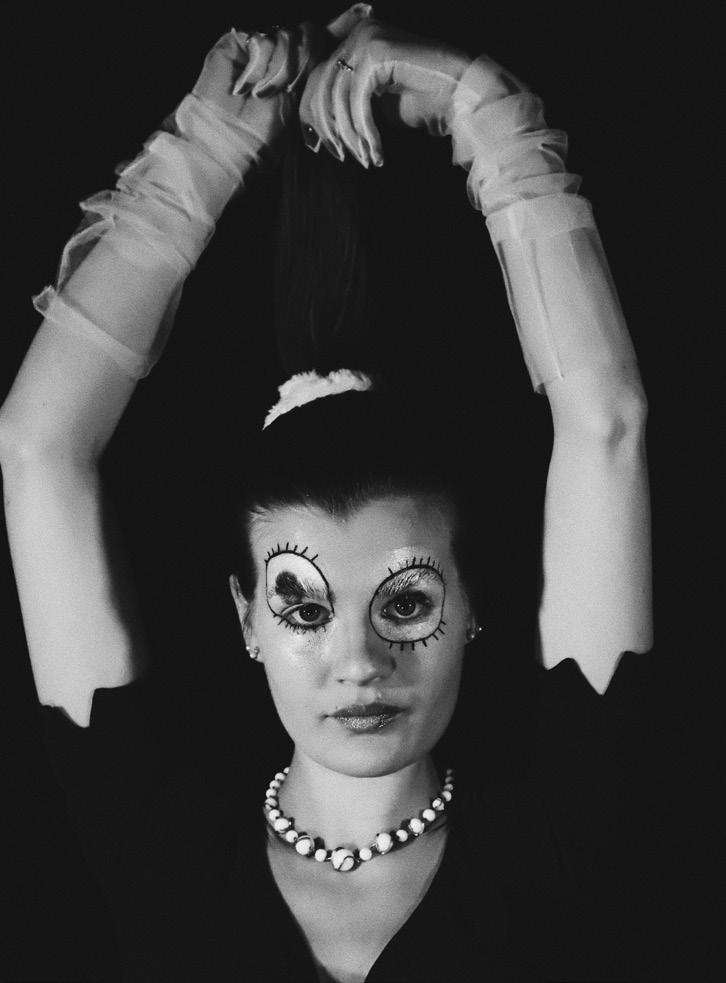

Hope is evil. Hope is despair. Hope is the root of all agony.
As absurd as it may sound, is there a possibility that this might be true? After all, Hope originally resided in a jar full of evils, Pandora’s box.

The most prevalent interpretation of Pandora’s myth centers around optimism. In Greek my thology, Pandora was the first human woman created by the Gods who was presented with a jar full of evils and ordered not to open it. But curiosity got the best of her. She opened the jar and all evils flew out to plague humanity forev er and beyond.
But Hope still remained!
It is believed that Hope stayed inside at Zeus’ will because he wanted people to suffer. And the one potential mitigating force, Hope, was locked away to teach mankind a lesson about the consequences of disobeying God. Pandora was the right person for this task because she was curious and clever, but not malicious.
Hence, the premise is that Hope makes life bearable. And I do agree with it.
Hope is the sole ray of light during the dark night of the soul. We require Hope to cope with profound losses and hardships in life. Hope is what got me through my darkest nights, the hardest days, and the longest battles. Hope is
Hopewhat makes life bearable. In which case, Hope is good!
But this makes me question, if Hope is a virtue then why was it imprisoned along with evils? Could Hope be evil too?
Hope leads us to false expectations. We keep looking for better, for more, probably for something that doesn’t exist. Hope is at the heart of self-deception, masking the harsh re alities of life, inevitably drowning us in our own disappointments. Hope ignites a flawed be lief that someday things will get better, life will get better, and there’s a light at the end of the tunnel. But the light doesn’t really exist. All that lives is a misdirect that strays us away from the truth, only exasperating our pain.
Does that mean Pandora may have saved us by withholding Hope? Did Pandora protect us from our prolonged torment because Hope re mained in the jar?
She probably did, didn’t she? And yet here we are making her the antagonist while she’s been our savior all along. She probably saw what we couldn’t see. She understood that Hope wasn’t an expectation but the stepping stone to ac tion. It is the opportunity to pull ourselves out of our dark abyss of gloom and make our journey toward making a change for the better.
This way we analyze and make a conscious ef fort to understand the matter at hand: solving it, healing it, rather than letting it soak in erro neous expectations.
Or perhaps Hope was originally an evil but during its time being locked away from the sins, it transformed into an aspiration, a desire, a dash of confidence, and a likelihood of faith.
It’s hard to decipher what Hope truly is. Does it aid our struggle for a better future? Or does it kill our present belief? Is it our reason to keep going? Or our impetus for action?
The possibilities are endless. But what’s finite is that Hope in all its entirety is needed in mea sured doses to progress in life.


 Directors: Maya Lazar and Sydney Pottow Photographers: Iraj Chaudhry, Harris Freeman, and Maya Lazar Beauty: Maya Lazar, Olivia Sanderford and Valeria Ramirez Stylists: Aubrey White and Uni Valdivieso Woolridge
Photo Editors: Harris Freeman and Maya Lazar Layout: Olivia Sanderford Videographer: Natalie Williams On-set: Bella Bohnsack and Savannah Tindall Models: Dikshant Dhoke, Grace Green, Reeya Mathur, Gauri Nema and Delilah Oliveira
Directors: Maya Lazar and Sydney Pottow Photographers: Iraj Chaudhry, Harris Freeman, and Maya Lazar Beauty: Maya Lazar, Olivia Sanderford and Valeria Ramirez Stylists: Aubrey White and Uni Valdivieso Woolridge
Photo Editors: Harris Freeman and Maya Lazar Layout: Olivia Sanderford Videographer: Natalie Williams On-set: Bella Bohnsack and Savannah Tindall Models: Dikshant Dhoke, Grace Green, Reeya Mathur, Gauri Nema and Delilah Oliveira
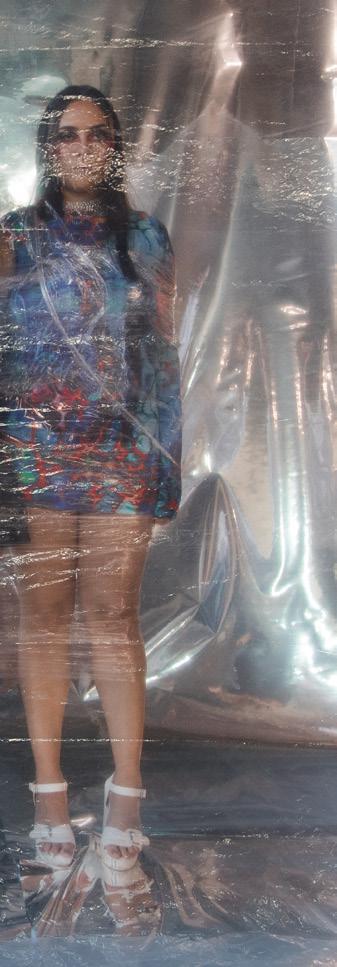
 Sanderford
Sanderford
Isn’t it ironic that most products that define femininity in the modern world were creat ed by men, and for the male gaze? Feminine presentation is thrown at women at an early age. Although society deems female sexuality to be repressed, femininity and sexuality seem to go hand in hand. Not only are we told how to expe rience our own sexuality, but the commercializa tion and commodification of it is inescapable. Presenting the way society expects can feel like a performance –which can be suffocating. We aim to demonstrate this idea by wrapping hy per-feminine models in plastic to reveal how our images are “wrapped up and sold to us” (Bella Bohnsack). The models will be styled to resem ble Barbie dolls to reinforce the idea of human objectification. What were once symbols of fem inine sexuality became an expectation as the fe tishization of femininity emerged.

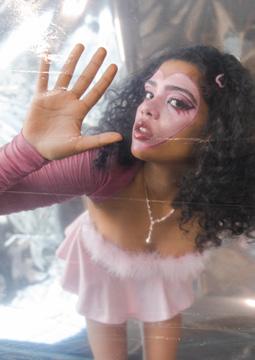

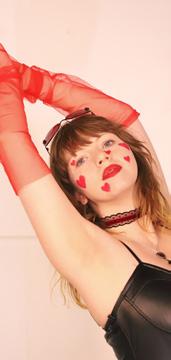


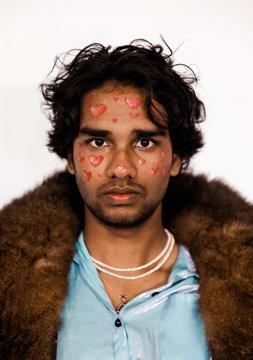
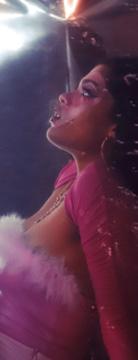


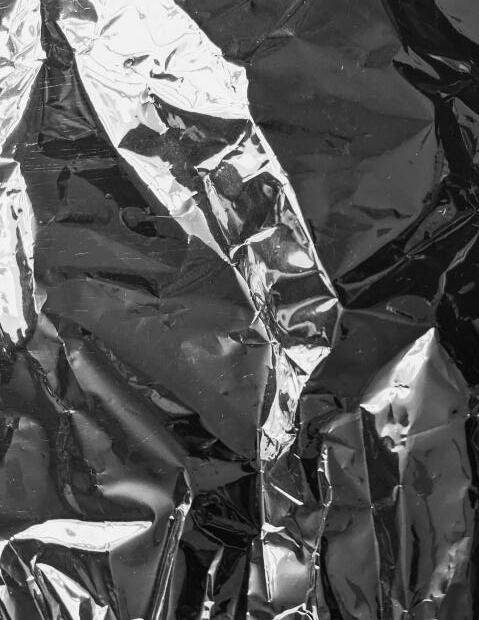
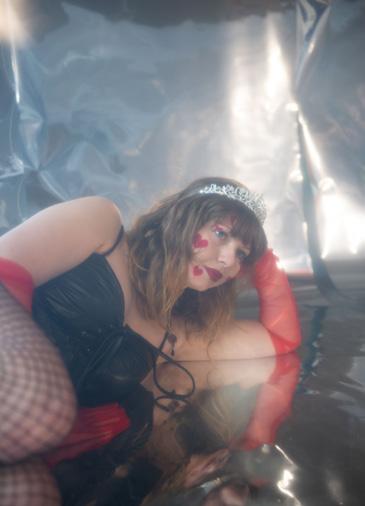
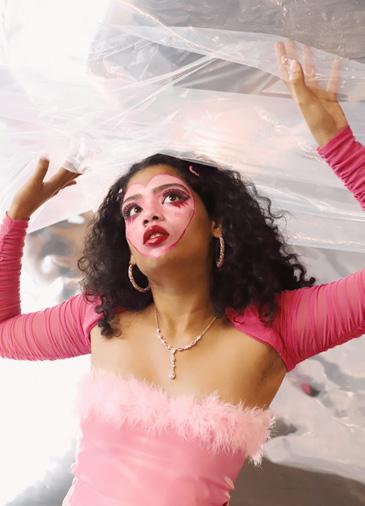



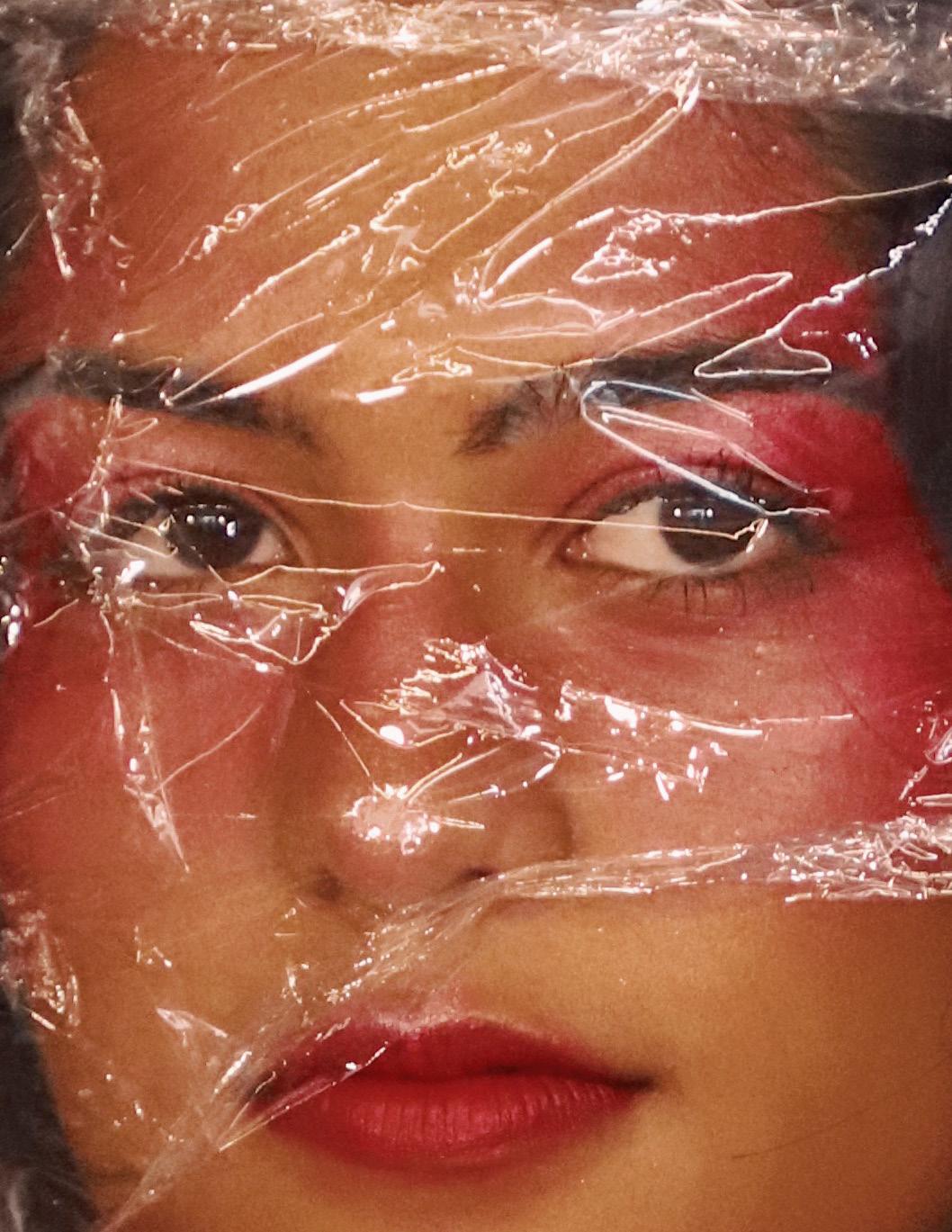

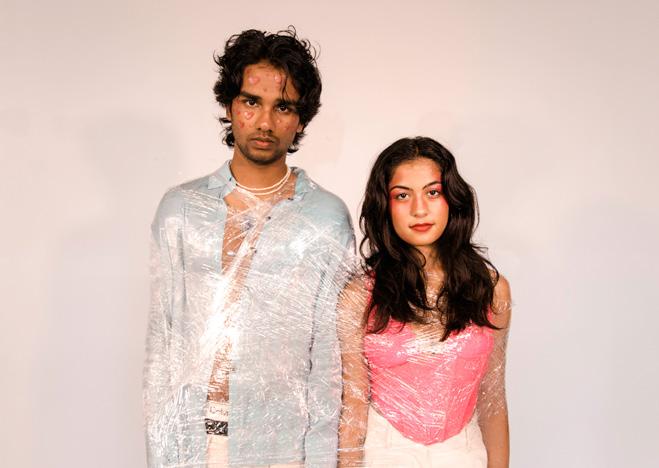

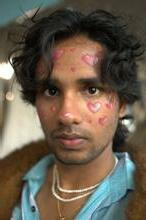


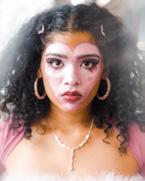
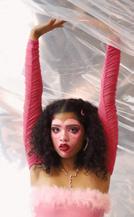
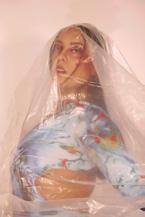
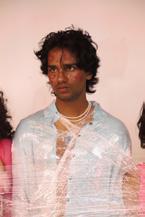











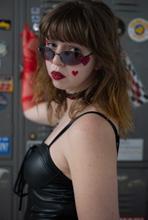
The drop right after sitting anxiously at the top of a rollercoaster. This stomach pitfall feeling can seem unavoidable after seeing a redinked F at the top of an exam or missing a game winning point.
Making mistakes too often leaves us in a stand still of asking ourselves unanswerable hypotheticals and replaying an unnerving moment in our heads. As uncomfortable as it might be, making mistakes has a fixated beauty that ultimately shows us it’s okay to not be perfect and that our self-reflection is essen tial in embracing our humanness.
Mistakes are inevitable, but sometimes we focus our reflection of mistakes on the bad parts rather than the good. In classes, I wasn’t too great at science. I al ways dreaded getting called to answer a problem on the board and getting it wrong in front of all my peers.
I spent a majority of the time more concerned about whether they thought I was smart, and not on the fact that me messing up could help not only other students who were also confused but myself in the process for the exam.
We must consider that our mistakes act as a beacon of potential for not just ourselves but those around us.
For Sophie Klein, a professor in the CORE Curricu lum at Boston University, it’s not about what hap pens when you make a mistake but what you do afterward. “Nobody is born doing anything perfect, they have to make mistakes to improve. You have the choice in how you respond to that mistake. To be human is to feel bad about making mistakes but trying to figure out how to move forward from them and learn from them is everything.”
Mistakes as a learning experience are no stranger to Andrez Marquez Santacruz, a sophmore in the Col lege of Engineering at Boston University, who said the repercussions of mistakes help us learn more than the actual mistake itself.
“The pain, blistering, and suffering that results from the mistake of placing a hand on a stove is what remains in the thought process and awareness of people. If there were no real consequences, people wouldn’t necessarily learn as much.”
The effects of our mistakes, no matter how devastat ing they might feel in the moment, act as a mirror for recognizing when we’re put in a similar situation in the future and how to take a more progressive path.
“I know whenever I mess up and make a mistake, I want to never think about it ever again and try to find a way to forget it, but it always ends up coming back in one way or another,” said Esmeralda Moran, a sophomore in the College of Communications at Boston University. “Whenever I’m doing something that might screw me over in the long run, I’m con veniently given an embarrassing memory of my past mistakes and soon after, I don’t do whatever I might’ve done.”
“Mistakes are the stuff of everyday life, it’s a step to ward becoming a better version of ourselves and to ward becoming more human,” said Klein.
Mistakes will forever be a part of our lives, but our human ability to take control of how we choose to address our mistakes and make something of them, is far more powerful than we could ever imagine.

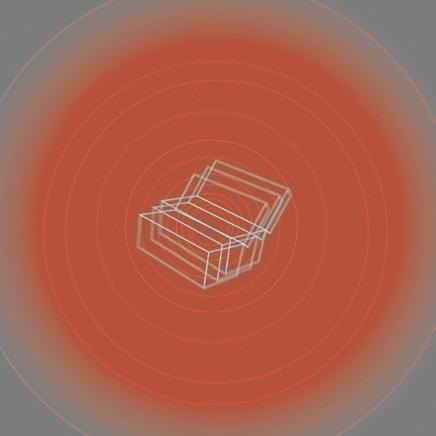

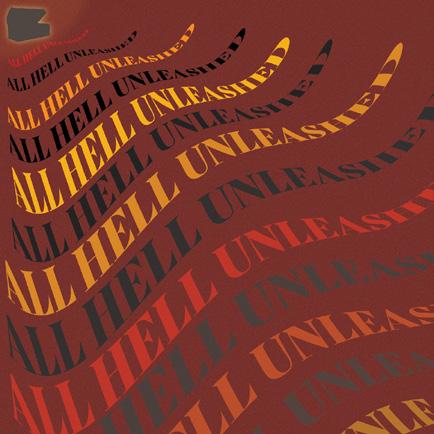
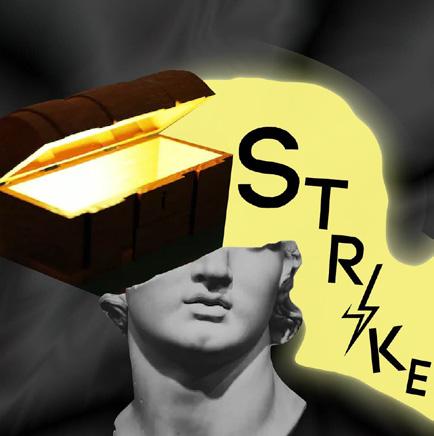 Anita Emokpae
Anita Emokpae
Anita Emokpae
Sherry Ma
Alexis Rodriguez
How do you visualize Pandora’s Box?
Anita Emokpae
Anita Emokpae
Anita Emokpae
Sherry Ma
Alexis Rodriguez
How do you visualize Pandora’s Box?
